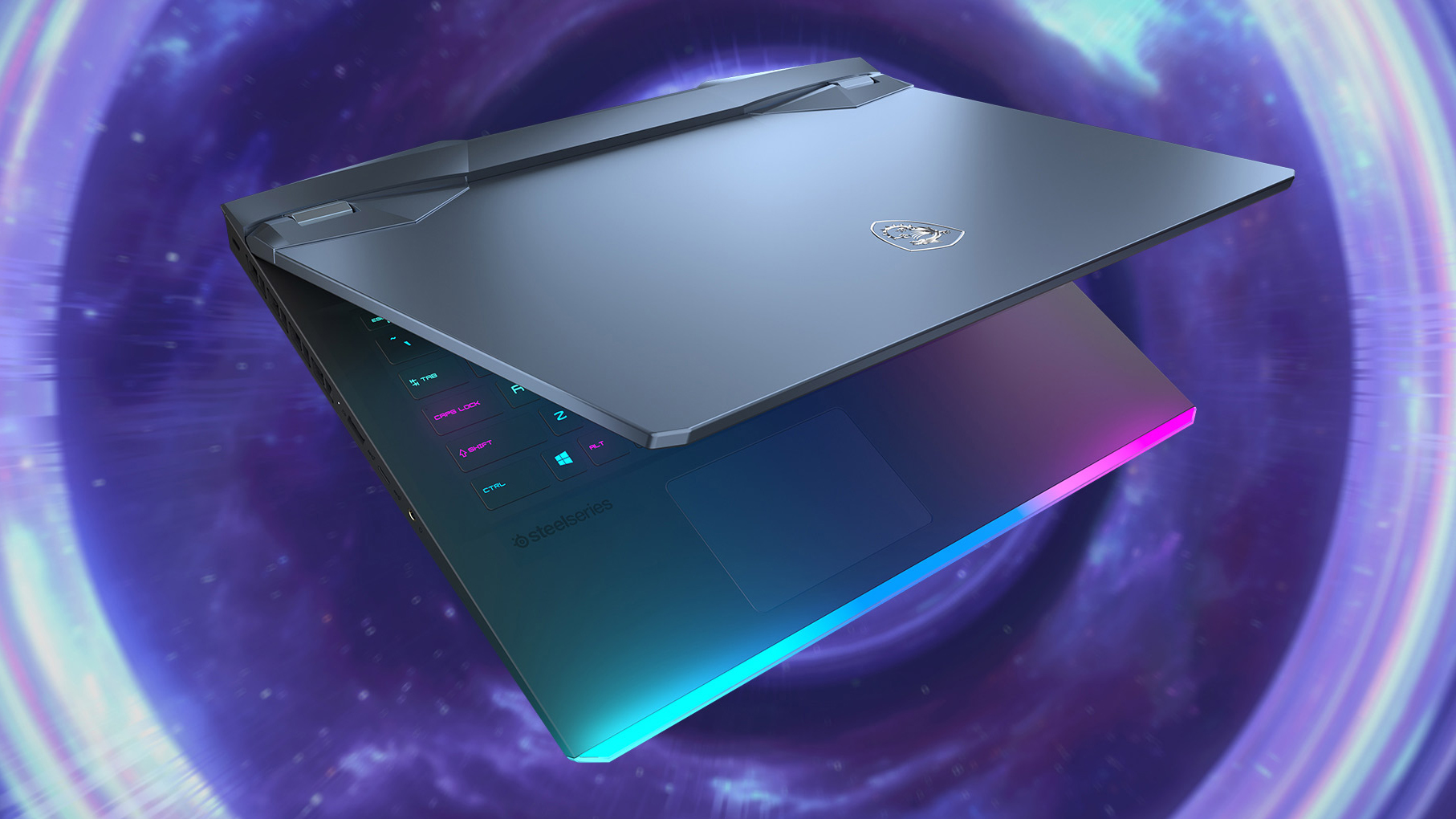
The T3 best gaming laptops guide for 2022 is constantly updated to bring you the very best laptops for every gamer and every genre. Whether you’re a massive fan of MMORPGs, favour an FPS, or you prefer to immerse yourself in indie games, we can help you find the perfect system for your needs, your budget and your games.
The Best Gaming Laptops guide i big because no two gamers are alike. While every laptop here is a great laptop that’s impressed T3’s team of expert gamers, what’s right for one gamer may be wrong for another. As a result you’ll find a very wide range of gaming laptops here. There are incredibly expensive premium systems boasting spectacular specifications, state-of-the-art graphics cards with real-time ray tracing; brilliant all-rounders that can switch seamlessly between work and play; and budget bargains that can still play the latest AAA games, albeit not quite at the maximum possible settings.
Gaming laptops are going to be a little harder to really understand this year, primarily because Nvidia has unlocked the Thermal Power Design (TDP) on their GPUs, allowing vendors to customise the power draw of the graphics processor they use. Basically this means that some laptops running a Nvidia GeForce GTX 3070 are going to outperform some other laptops running an RTX 3080.
If that wasn’t confusing enough there’s also no obligation for vendors to highlight this with a Max-P (Performance) or Max-Q (Efficiency) badge, so the only way to really know the graphics performance is to look at the wattage draw of the GPU.
Then throw in the fact that AMD has some graphics cards that are as good as anything Nvidia is producing and that there's even less of a software gap now that AMD offers the DLSS equivalent: FidelityFX Super Resolution (FSR). So, it's well worth considering an all AMD system this year.
2022 introduces a major difference in Intel’s 12th gen, H series CPUs since they have 14 cores, rather than the eight cores you see on the 11th generation H series processors. The array is split into eight efficiency cores and six high performance cores, which might seem like an exchange that’d give you similar results, but for many general work tasks it actually dramatically improves the overall performance and helps reduce the device’s battery drain under less intensive workloads.
While we’ve seen impressive performance from a few 12th Gen i7 units, we’ve only tested a couple of 12th Gen i9 laptop CPUs so far this year and both underperformed. So we’re a little apprehensive to recommend the top of the line 12th generation Intel CPUs just yet. We’ll update this advice here if this changes.
If you’re looking to kit out your entire gaming rig, check out our guides to the best gaming mouse, the best mechanical gaming keyboard and the best gaming headsets too.
For everyday laptops, check out our best laptops guide and our guide to the best budget laptops.
Oh, and lastly, as gaming laptops tend to focus on gaming, for every day hardware components like cameras, be sure to check out T3's best webcams buying guide. The Razer Kiyo Pro is well worth checking out as it is a gamer-focussed webcam that also ticks all the boxes for looking professional in business meetings.
The best gaming laptops you can buy today
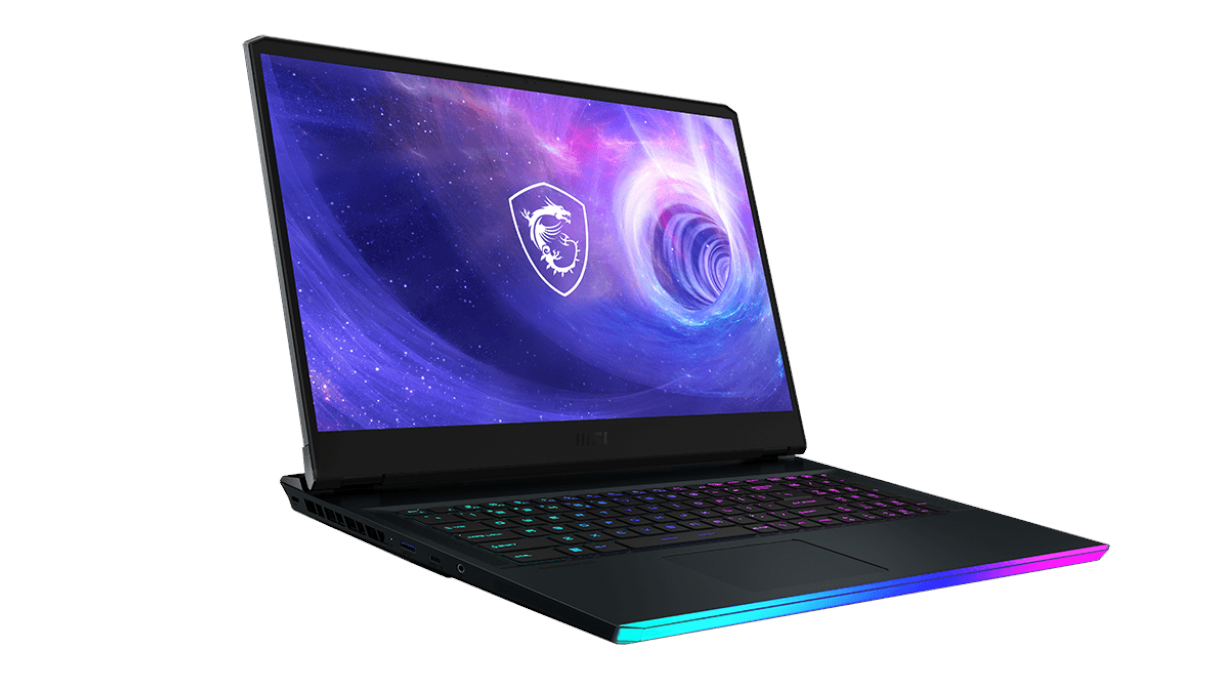
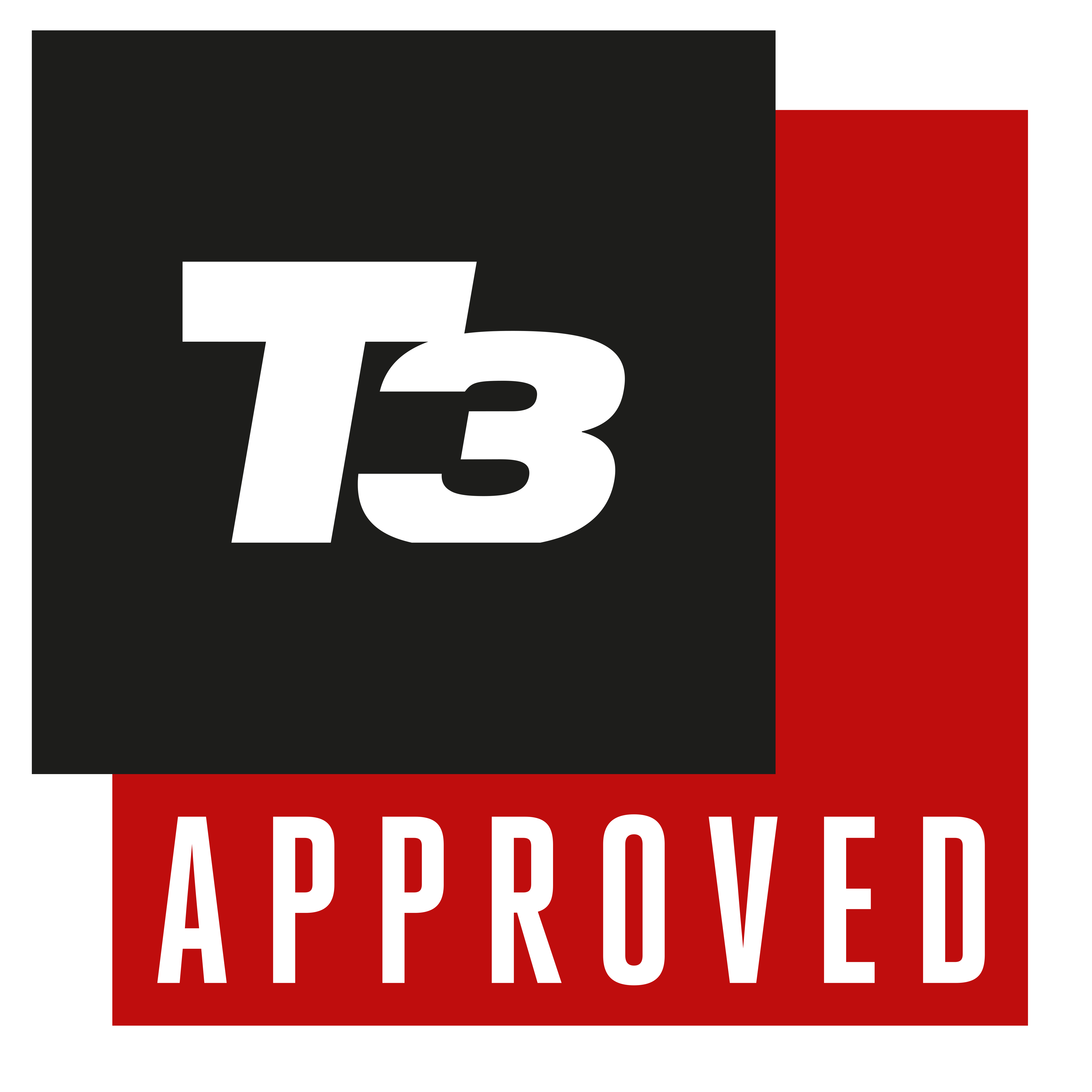
MSI's performance-first gaming rig is the first out of the gate to
take the top position in 2022.
1. MSI Raider GE76
Our expert review:
Specifications
Reasons to buy
Reasons to avoid
It was a close competition between Intel’s i9-11980HK, the AMD Ryzen 9 5900HX and Apple’s M1 Max 10-core processor for the fastest laptop CPU last year, so we’re not overly surprised that Intel was keen to get MSI’s new Raider GE76 with a 12th processor over to us for testing as soon as it could.
We did have some thermal issues with the GE76 running an Intel Core i9-12900HK, but when configured with an i7-12700H this unit performed even better than expected.
The i9-12700HK shows performance bumps of between 9 and 37 percent over last year’s i9-11980HK on various benchmarks, an improvement that is likely due to the adoption of an Apple-like arrangement of six performance cores and eight efficiency cores. The updated processors offer a total of 20 hyperthreads running at 4.7GHz max turbo frequency, which puts this chip at the top of our laptop processor performance list for the time being.
The GE76 has long been MSI’s 17-inch gaming flagship designed for those that want a no-compromise gaming experience on-the-go and this year’s iteration is no different. The range starts with a 12th Gen i7, 16GB of RAM and a Nvidia 3070Ti GPU for $3,849, but you can configure them all the way up to an i9, with 32GB of RAM and a Nvidia 3080Ti, if you’re happy to drop $7,199.
In addition to deciding which of the ultra premium components you’d like, there’s also a few choices of screen ranging from a 120Hz 4K monitor with DCI-P3 colour to the 360Hz FullHD IPS panel for professional-level high refresh rate gaming. MSI sells different screen and component combos to different vendors so make sure you’re looking at the same unit when comparing sales outlets.
The model we tested came with a 150W TDP Nvidia 3070 Ti GPU which offered impressive gaming performance with averages of over 100fps on most titles using 1080p Ultra settings, so you shouldn’t have any issues running games full tilt whichever screen and GPU combo you choose.
Of course you can expect full RGB per-key backlighting from the SteelSeries gaming keyboard, and the footprint and 2.9kg weight is identical to its predecessor, so there’s not much in the way of surprises here.
Battery life was pretty good for a gaming laptop lasting between five and six hours under general non-gaming conditions. There’s plenty of ports and the fans aren’t too loud so there’s not too much in the way of downsides, but there’s nothing overly dramatic differentiating this one from the competition.
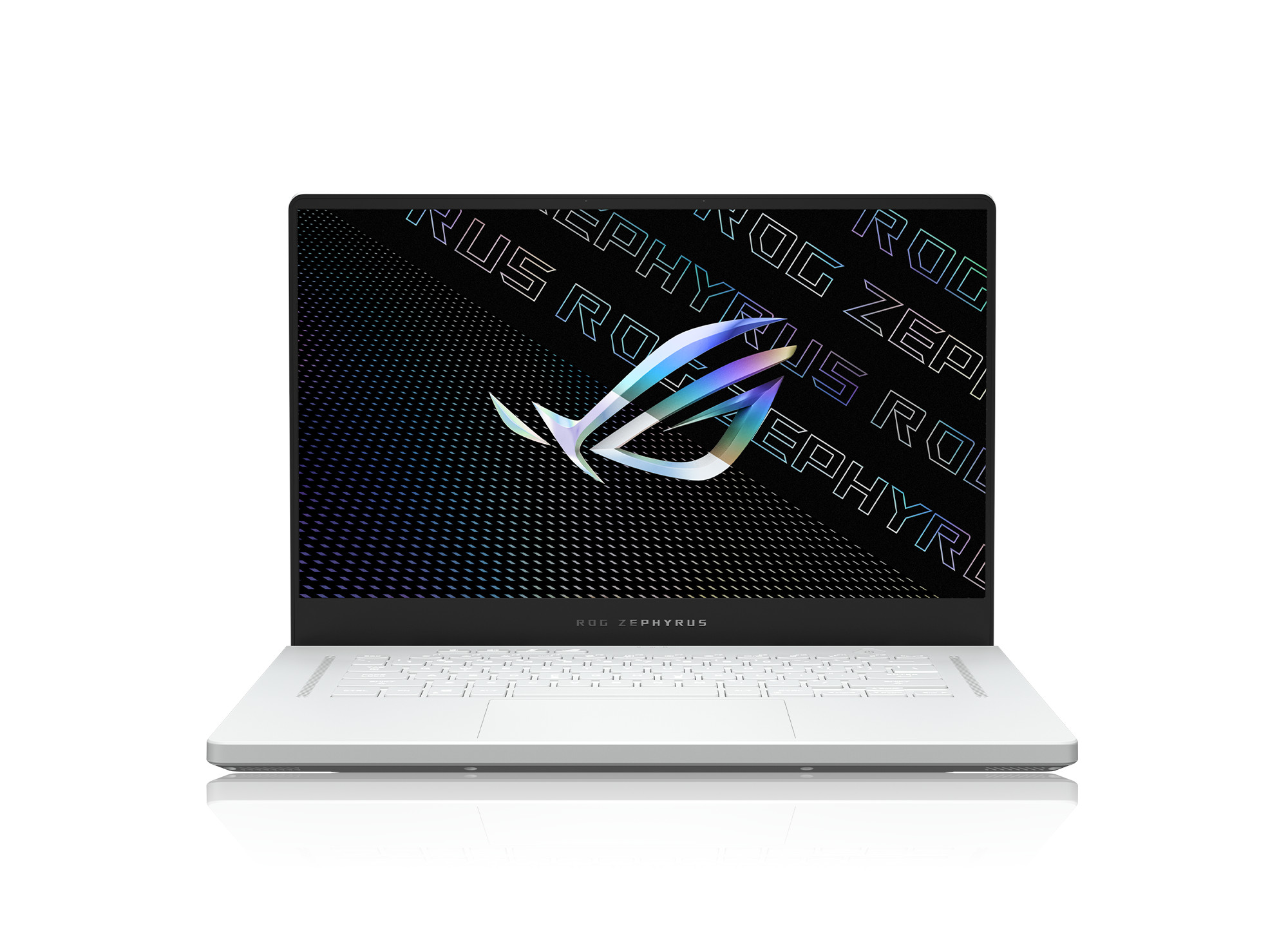

Asus’s well balanced gaming Ultrabook offers great performance at a number of reasonable price points.
2. Asus ROG Zephyrus G15
Our expert review:
Specifications
Reasons to buy
Reasons to avoid
Asus’s Zephyrus G range has been an outstanding performer over the last few years topping a heap of our best gaming and best professional laptops list. The only downside of these devices has been that they’re so in demand that they’re actually sold out more often than not.
All of the Zephyrus G15 units come with identical screens, an AMD Ryzen 9 processor, 16GB of RAM and a 1TB SSD, so the only option is what GPU you pair it with. At the entry level that could be a Nvidia RTX 3050Ti for a cost of $2,399, and this ranges all the way up to the $3,899 G15 with an RTX 3080.
While we tested the latter, it’s worth pointing out that the entry G15 packs a serious amount of power for the average user and would make an amazing professional Ultrabook for anyone that just needs lighter gaming performance.
The 15.6-inch screen is a nice balance of speed and resolution offering QHD picture quality and a 165Hz refresh rate. The 2560 x 1440 pixel resolution makes the IPS panel look vibrant and the Pantone calibrated DCI-P3 colour palate means you get a professional level HDR experience that works equally well for gaming and professional applications. And while there are faster screens than 165Hz, it is more than fast enough for most users to play competitive online games without being a major additional expense.
The system does use an AMD CPU, but all configurations still use Nvidia graphics cards, so you get basic cross-platform Adaptive-sync compatibility here, but there’s no expensive G-Sync certification that some professional level gamers might need. This is a sensible cost/benefit decision for the average user that can live without native screen overclocking.
The AMD Ryzen 9 5900HS processor is between 10 and 31 percent faster than its predecessor the 4900HS in our benchmarks and it’s pretty much on par with Intel’s Core i9-11980HK so it was just about the fastest laptop processor you could get until Apple launched the M1 Pro (which out performs it by between 8 and 35%, depending on the test). Still the 5900HS is one of the most powerful chips you can get on consumer laptops and if you pair it with a Nvidia RTX 3080 GPU you’ll be able to push over 60fps on FullHD Ultra in basically any game.
If you look at the ROG Zephyrus G15 against the similarly priced MSI Creator Z16 which has a RTX 3060 and a 120Hz screen you’re basically getting a serious GPU and screen upgrade in a package that’s a little thicker, but also a bit lighter (even though the G15 has a bigger battery). Lasting 6 hours and 38 minutes in movie playback and a similar time under load the Zephyrus G15 offers solid performance that should last for the better part of the day without being plugged in.
Verdict: Asus’s well balanced gaming Ultrabook offers great performance at a number of reasonable price points.
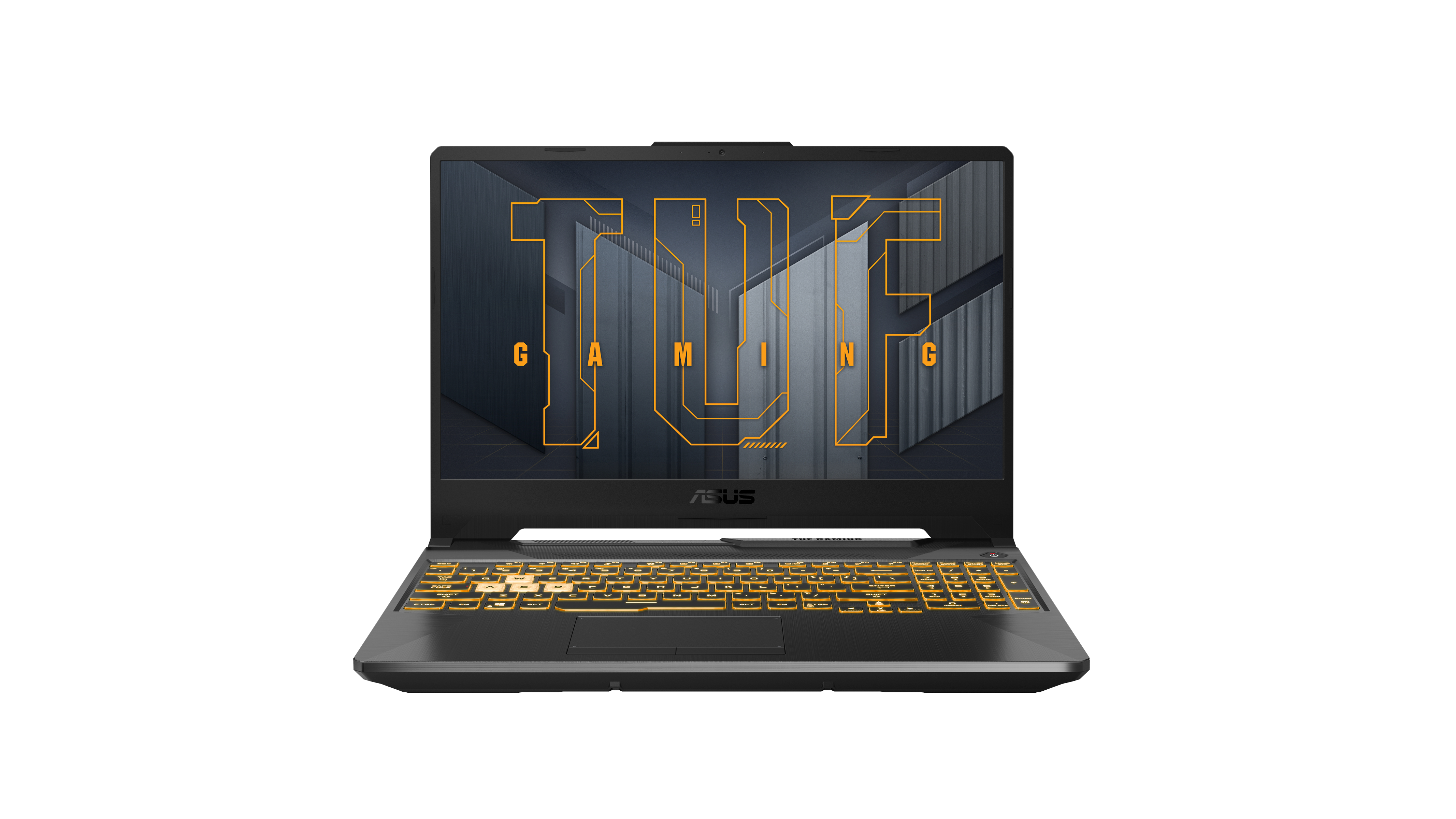

Asus is back with another AMD/Nvidia-powered gaming laptop that finds the perfect sweet spot of essential features and price.
3. 2021 Asus TUF Gaming A15
Our expert review:
Specifications
Reasons to buy
Reasons to avoid
Asus’s TUF Gaming A15 is back with 5000 series AMD CPUs and RTX 30 cards and the partnership couldn’t be sweeter. AMD has been ramping up its presence in the laptop market over the last couple of years with pretty staggering performance and efficiency margins over comparable Intel products and Asus’s TUF gaming laptops have been some of the first devices to showcase them.
This year the TUF Gaming A15 is fitted with an 8-core 16-thread AMD Ryzen 7 5800H CPU, 16GB of RAM and either an Nvidia RTX 3060 or a 3070 GPU. The former goes for $2,099 locally while the upgraded GPU will add another $300 to that total. Both these configurations come with a 15.6-inch FullHD IPS display that runs at 144Hz, but you can upgrade the RTX 3070 configurations to a 240Hz adaptive sync screen for a total of $2,599. All of these configurations hit the sweet spot for enthusiast and competitive gamers with each offering solid value propositions.
These units are very much performance first, so they're a little thicker at 2.45cm than your average gaming ultrabook, but this extra space has been used well by the A15 keeping the internals under 92-degrees, while minimising fan noise and ensuring heat is kept away from the keyboard surround. The trackpad is very usable and even though the WASD keys are distinguished, they’re marked in a subdued transparent plastic so that they’re not in your face (unless you want them to be).
In general work performance and media encoding tasks the Ryzen 7 5800H here lines up pretty closely with what you’d expect from an Intel Core i7-11800H CPU. When it first arrived it wiped the floor against Intel’s Core i9-10980HK, so it’ll handle pretty much anything you can throw at it.
Graphically this device performed roughly as you would expect, with framerates of a hundred or more on games like The Division 2, F1 2020 and Sid Meier’s: Civilization VI. This means you’ll be putting those high refresh rates to good use if you dial down the settings a little or drive less graphically demanding games.
It was nice to see Ethernet and HDMI ports and while the chassis was definitely made from a lightweight plastic, it felt sturdy and had a cool overall aesthetic.
Managing just shy of six hours in PCMark 10 Home Office battery benchmarks and eight hours and 18 minutes in 1080p movie playback, you should be able to get a working day’s worth of battery from this gaming powerhouse, which is rather remarkable for a gaming rig.
You can find screens with lower latency and systems with better performing CPUs or GPUs, and if you need the absolute pinnacle of performance you should look to other laptops on this list that will fit your needs. Keep in mind though that anything up from here will offer diminishing returns on your investment which means this is going to be the best gaming laptop for most people.

Does Asus's all-red bet pay off in high performance gaming.
Specifications
Reasons to buy
Reasons to avoid
You’d be forgiven for thinking this 15.6-inch 1080p gaming laptop from Asus is just another generational update, but the Advantage Edition Strix G15 is actually rather unique. First off, this device uses an AMD Ryzen 9-5900HX CPU that’s attached to the cooling architecture using liquid metal rather than thermal paste – offering up to 14 degrees difference in cooling capacity, according to Asus. The Advantage Edition pairs this CPU with an AMD Radeon RX 6800M GPU to get the amplified performance benefits known as ‘AMD Advantage’. The performance bump is up to 11 percent on some titles, which is a neat feature considering how competitive AMD’s GPUs are these days.
The Advantage Edition ROG Strix G15 configuration comes with 16GB of RAM and a 512GB PCIe SSD, and while there’s the option for pro-grade 300Hz 1080p display in other regions we’ve only seen the higher resolution 1440p monitor that runs at 165Hz available locally.
Asus has tweaked this machine to get the most performance possible and it really shows in certain benchmarks netting between seven and 10 percent bumps over other recent Ryzen 9-5900HX laptops in media encoding benchmarks and spikes of up to 28 percent improvements in certain general benchmarks. This means it’s pretty much on par for general work tasks as Intel’s recently launched 11th generation i7 and i9 mobile processors.
You can expect the AMD Radeon RX 6800M GPU to the same as higher powered 3070 devices (125W) or low-power 3080 mobile GPUs (100W). This means 80+ fps on modern titles at FullHD using Ultra settings and around 50fps on higher resolution or ray tracing scenarios.
The Strix G15 range looks great with its novel vent designs, edge RGB lighting and an interchangeable chassis piece that allows you to include a pop of red, grey or black to the rest of the chassis. The RGB and system control softwares that are pre loaded are genuinely useful and allow you to understand and tweak your system’s performance to get the most out of it at all times. It does miss out on a webcam and the 512GB of storage is small for a gaming laptop, but these are the only limitations we can see.
The G15 Advantage Edition comes with a generous 90Wh battery that has been optimised to last over eight hours in general work conditions and closer to nine hours for 1080p movie playback. This is probably a touch below average for professional Ultrabooks, but for a gaming laptop it’s the best we have on file by a long margin.
The ROG Strix G15 Advantage edition is a standout option that will likely end up being one of our favourite gaming laptops of 2021.
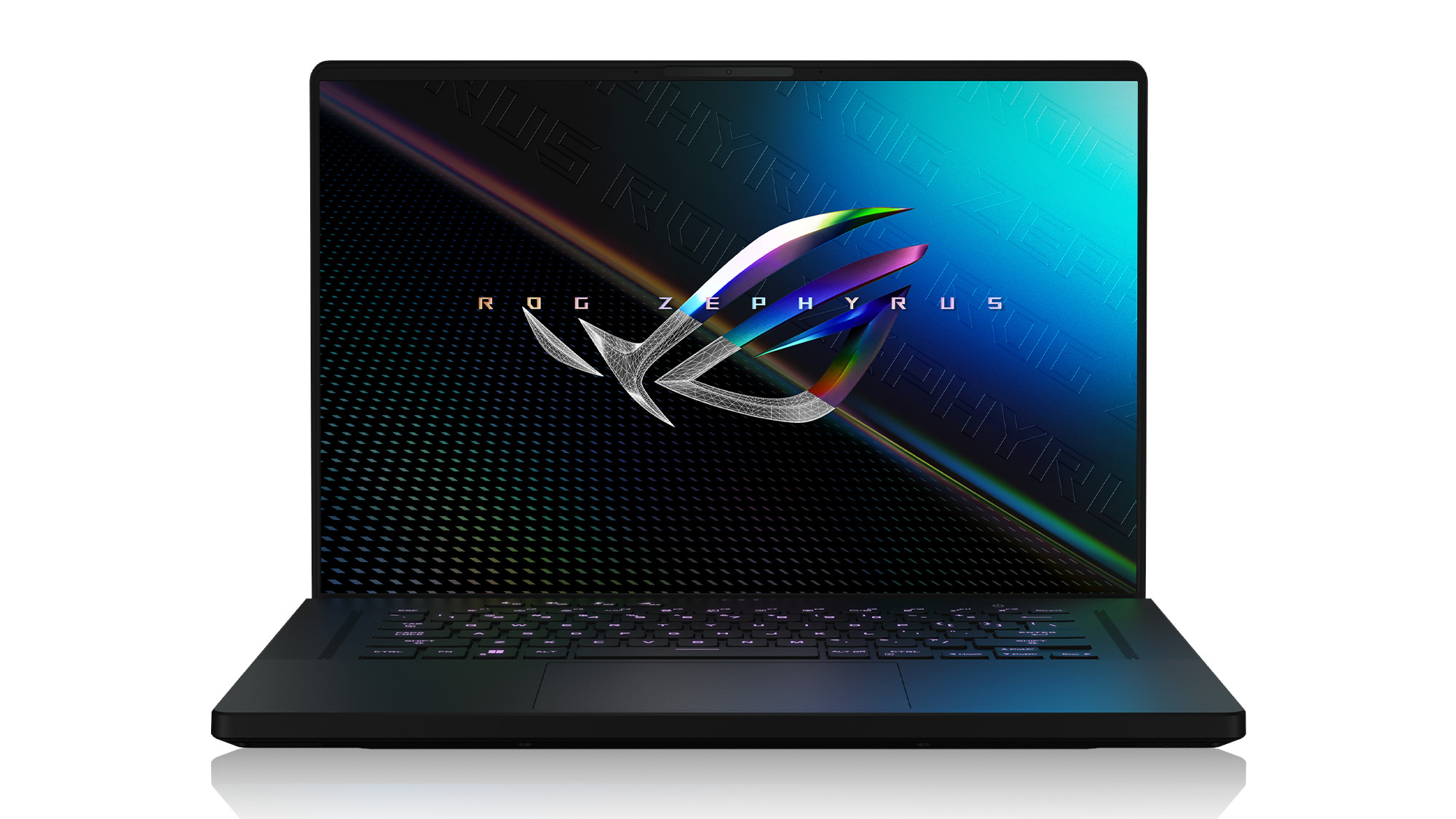

Asus' M16 is one of our top Ultrabooks that carries enough graphical performance for any level of gaming you want.
5. Asus ROG Zephyrus M16
Our expert review:
Specifications
Reasons to buy
Reasons to avoid
The ROG Zephyrus M16 is a refresh of Asus’ 2021 ROG Zephyrus M16 that sticks pretty close to its predecessor. It’s got a similar 16-inch display in a 15-inch form factor, with the same optional 16 by 10 QHD+ screen, wrapped in an almost identical 2kg chassis.
The updated 2022 Zephyrus M16 comes with either an Intel Core i7-12700H or an Intel Core i9-12900H processor. The former is paired with a 165Hz FullHD+ 16:10 display, 16GB of RAM and a choice of a Nvidia GeForce RTX 3050 Ti (100W) GPU for $2,799 or a RTX 3060 (120W) GPU for $3,199. If you opt for the i9 model, you’ll get that higher res 2560 x 1600 165Hz screen, a larger 32GB RAM allocation, and an RTX 3070 Ti (120W) GPU for $4,499.
For a reduced range, the configurations are pretty nicely balanced, even if we do wish that all of them got the QHD display. In addition to being higher resolution the QHD+ display also offers a professional level DCI-P3 wide colour gamut for colour grading or high-fidelity HDR gaming, rather than the standard 100 percent sRGB colour on the 1200p monitors.
The metal chassis with ‘soft-touch’ coating gives a premium feel to the device and the generous trackpad, quiet keyboard, and subtle colour on the top shell continue a level of sophistication that is often missed on gaming laptops.
The Zephyrus M16 may be design conscious, but it’s also got good performance stats for a gaming Ultraportable. The i9-12900H CPU model we tested wasn’t running at the i9’s full potential , but it was at least close enough to the i7-12900H processor performance (generally) to not be a major issue. It is still unfortunate to pay for a ‘more premium’ CPU and find lower performance, even if it does cost only a fraction more.
The Nvidia RTX 3070 Ti GPU that we tested the Zephyrus M16 with was allocated a 120W max power draw, which is a reasonable middle ground for this GPU. This M16 will get around 15 percent more performance than a 3070 Ti with a 95W TDP, but about 10-15 percent less than the same 3070 Ti offered on bulkier gaming laptops with 150W GPU power allocations. This translates to 90fps+ on modern titles using 1080p Ultra settings and around 60fps+ when using ray tracing or at higher resolutions. Expect about half this graphical performance if you opt for the 3050 Ti GPU or about 20 percent less for the 3060 GPU.
While battery life was improved thanks to the CPU, general work tasks and 1080p video won’t get you more than 3-4 hours respectively. Other than the 12th Gen i9 underperforming, the main downside is that there’s been a $100 price increase from its predecessors on the low-end units and it’ll cost $1,100 more for the i9 model this year.
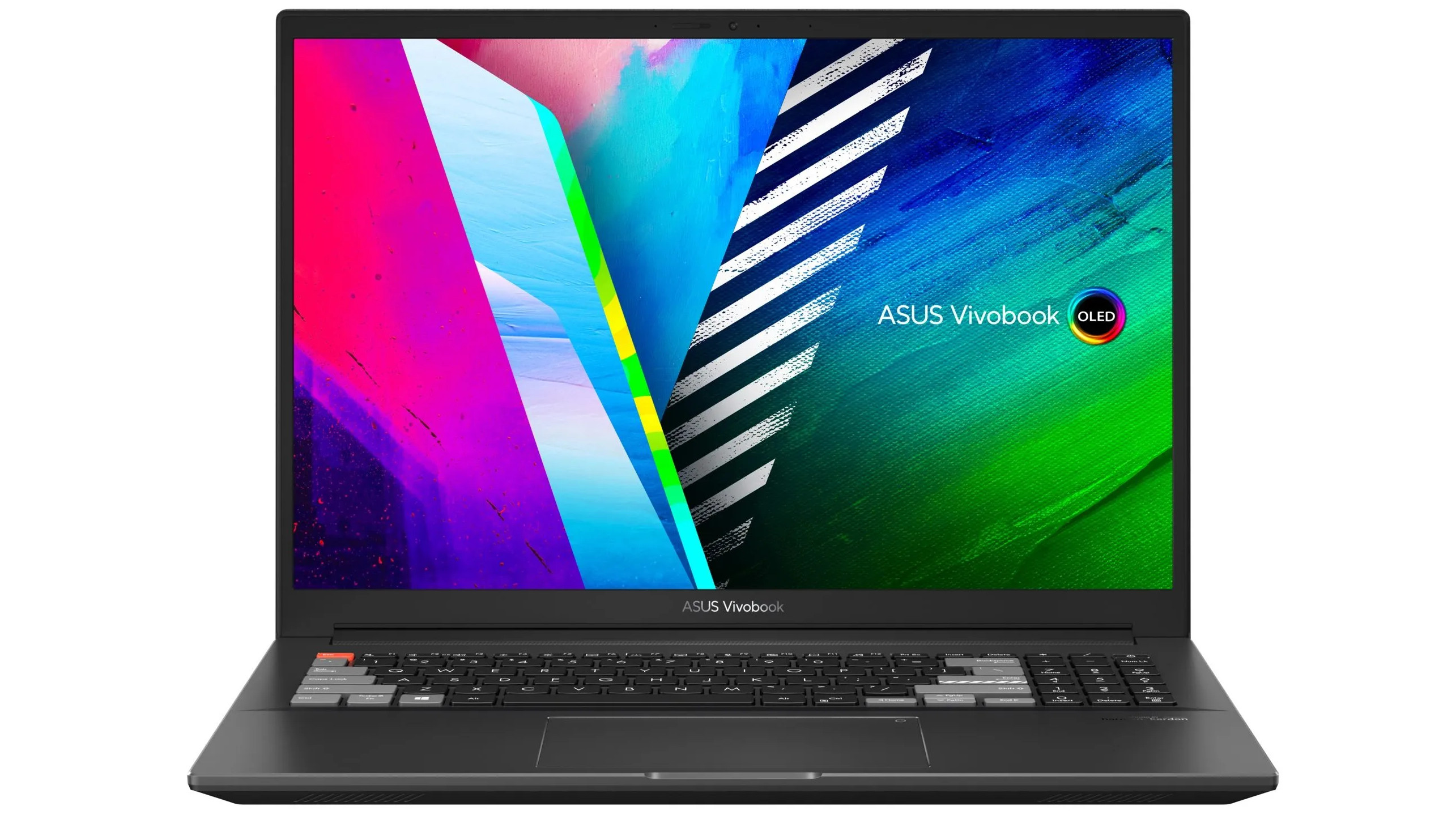

Asus' Vivobook Pro 16X OLED is a super compact Ultrabook with a vibrant screen and entry level gaming performance.
6. Asus Vivobook Pro16X OLED
Our expert review:
Specifications
Reasons to buy
Reasons to avoid
Asus’ Vivobook range has often catered to the more financially savvy premium Ultrabook consumers, but the Vivobook Pro OLED series is looking to change this presumption with powerful thin and light offerings with OLED displays. Even these days, OLED screens are not exactly commonplace, so we’re still surprised every time we see the colours they’re capable of reproducing and the Asus Vivobook Pro 16X OLED is one of the better OLED panels we’ve seen.
The 16-inch panel offers 4K resolution in a 16 by 10 format with Vesa True Black 500 HDR colour. While this is a pretty amazing feature set offering a 1-million-to-one contrast ratio, it actually sets the bar higher by meeting 100 percent of the DCI-P3 colour gamut and includes an unprecedented 0.2ms response rate on the 60Hz panel. This amounts to a generously sized display capable of accurate professional colour work and detailed creative workflows. It also looks pretty amazing for media playback and will bring to life any games you might want to fire up on it.
This impressive screen is backed up by one of the top AMD Ryzen 9 5900HX CPUs, a solid 16GB RAM allocation and a Nvidia GeForce RTX 3050 Ti GPU. That CPU was one of the best performing processors in 2021 and when paired with a 3050 Ti offers above average Ultrabook performance that’ll be capable of running demanding software with ease.
When paired with a 1TB SSD the Vivobook Pro 16X OLED comes in at $3,199, which means it competes directly with devices like the Surface Studio Laptop and undercuts the MacBook Pro 16 (M1 Pro) by $550. In CPU heavy tasks it’s not quite where the MacBook Pro 16 is, but the 3050 Ti offers meaningful performance improvement over the M1 Pro 16-core GPU so it’s pretty comparable on the whole.
You’ll be able to get over 45fps using 1080p Ultra settings on current titles, which should be just enough to play less demanding games in 4K on lower graphics settings or using Deep Learning Super Sampling technologies. This is the upper limit on this range
The generous 96Wh battery offers over 10 hours and 30 minutes in general work tasks and media playback when the screen is at 50 percent brightness, which means you’ll get a full day unless you’re gaming or really stressing the system. This is an hour and a half more than what we got on the MacBook Pro 16 and is up there with the longest lasting laptops with high res screens.
Asus has also invested a lot in additional features like a nifty DialPad for creative power users, a fingerprint reader, webcam shutter, low blue light software and a noise-cancelling microphone, to ensure you’re able to make the most of this device in any work environment.
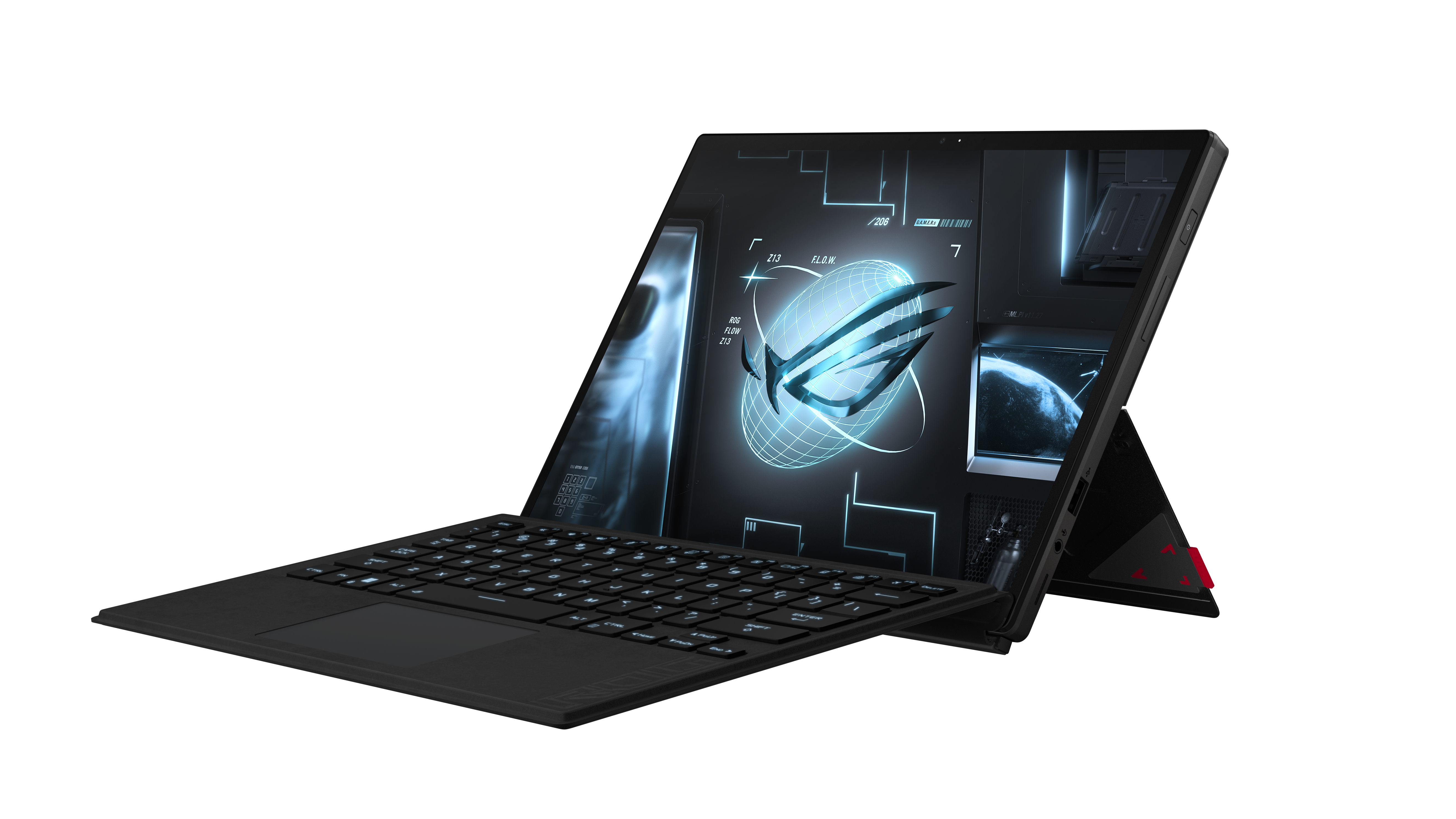

Asus' gaming tablet can tackle entry level gaming on its own or high-end performance with the ROG XG Mobile external GPU .
7. Asus ROG Flow Z13
Our expert review:
Specifications
Reasons to buy
Reasons to avoid
There’s quite a few devices and even plenty of software that merges the console, handheld and PC gaming arenas these days, but being able to game at your desk and then move into the living room or even to bed without stopping is a luxury that you still need to jump through a few hoops to do. The Flow Z13 is a Surface Pro-like tablet that houses some impressive components to allow you to take your high-res PC gaming anywhere you want, straight out of the box.
While it might be a 13.4-inch tablet that’s just 1.2cm thick 1.18kg, it was actually the first device we saw with the absurdly powerful Intel Core i9-12900H CPU under the hood. This is backed up by 16GB of RAM, a Nvidia GeForce RTX 3050Ti and a 1TB SSD in a model that retails for $3,399. You can save yourself $300 by winding back those specs to a Core i7-12700H processor and an RTX 3050 GPU if you can live with a 512GB SSD on your gaming unit.
Alternatively, the Flow Z13 comes in an i5 variation that relies on the integrated Iris Xe Graphics to render games, an option that is undoubtedly more affordable at $2,499 but which perhaps won’t be ideal as a gaming device on its own. This Flow Z13 model is competitively priced against Microsoft’s Surface Pro 8 range once you factor in SSD size and the included keyboard. This entry model can even be a pretty decent gaming rig if you want to pair it with the ROG XG Mobile external GPU that Asus launched last year. The ROG XG Mobile adaptors aren’t overly available locally, but we have seen some going with AMD RX6850M XT GPUs (pretty close to a Nvidia RT 3080 mobile) for $1,699.
We tested the top tier Asus ROG Flow Z13 with a ROG XG Mobile CG31 containing a Nvidia RTX 3080. There’s three GPUs in this configuration and three different levels of gaming performance depending on what’s plugged in at any point. With the external graphics you’ll get 85fps+ on most titles using 1080p Ultra settings, but if you’re hoping to get away with just using the tablet and its 3050 Ti, then you’re looking at more the 40+fps range for Ultra 1080p or 60+fps using 1080p Low, when the unit is still plugged into power.
If you do want to run it off the battery you really shouldn’t expect too much. Frame rates were capped at 30fps by default for all the titles we tested and battery life was just an hour and 15 minutes. You do get a bit more watching movies (six hours nine minutes) and doing work (four hours 23 minutes), but you shouldn’t plan to be too far from power for too long.
Even though the display is 120Hz it has an unusually high 30ms response time. We didn’t notice any lag when playing fast-paced online games, but it’s high enough that it’s going to be comparable to streaming to a regular tablet over something like Steam Link if you do have a PC capable of doing the brunt of the processing.
Best last-gen gaming laptops worth considering
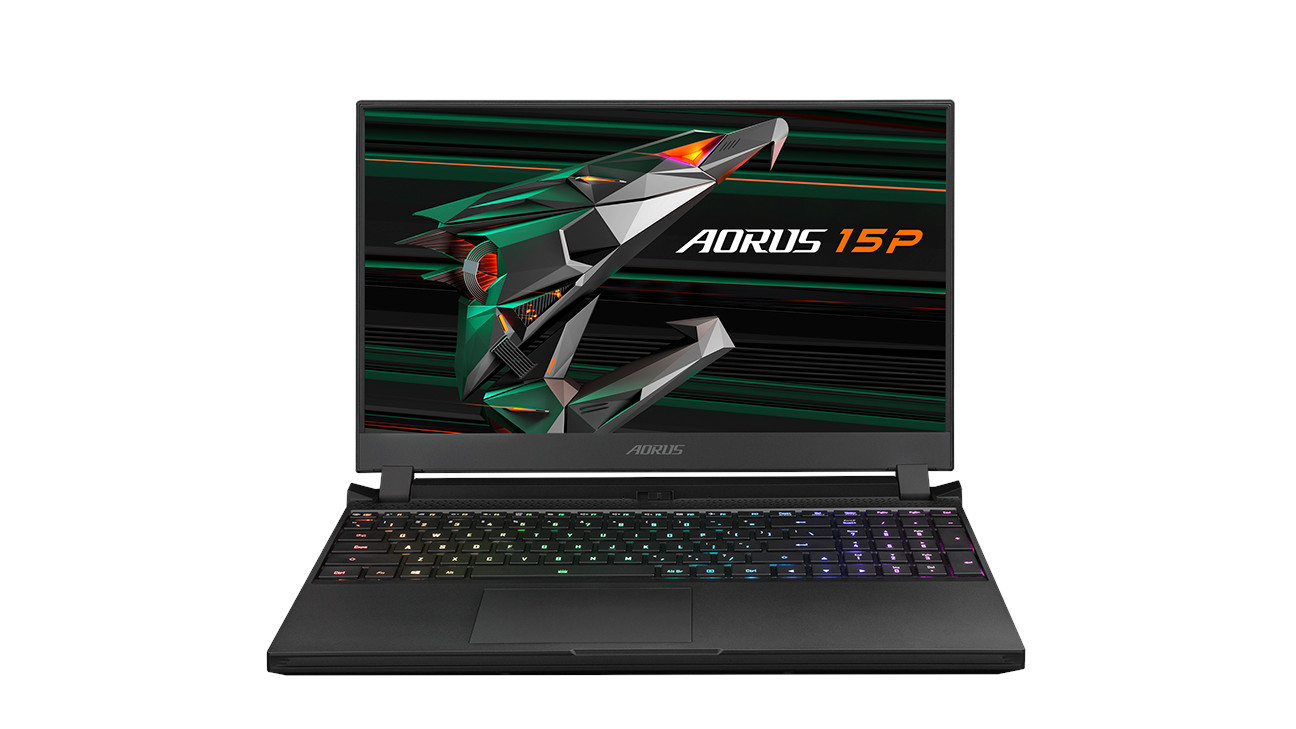

Aorus was first past the post with Intel’s 11th gen H series processors, but is this top shelf gaming laptop a real winner?
8. Aorus 15P YD
Our expert review:
Specifications
Reasons to buy
Reasons to avoid
Do you want the most powerful GPU available on a laptop? What about a 240Hz screen, or a 1TB solid state drive that can read and write at 7014MB/s and 5093MB/s, respectively? Well you can have it all in the Aorus 15P YD.
This unit was the first device to get Intel’s Core i7-11800H CPU which offered general performance gains of between 12 and 15 percent over equivalent 10th gen processors. While the clock speeds aren’t quite as high as previous generations you’ll have no issues running the most demanding software and games on this octa-core chip.
The Aorus 15P YD has a 15.6-inch Full HD IPS display that can be configured with a 360Hz panel in other markets, but we’ve only seen 240Hz options available locally. Either way the screens are some of the fastest you can get. If you do happen to be looking for professional E-sports level screens, the Grey-To-Grey response time of 14ms is a little higher than the most competitive units you can buy, but it’s definitely fast enough for most mere mortals.
The 15P YD’s Nvidia GeForce RTX 3080 GPU runs at 130 Watts, which is about middle of the road from what we’ve seen. This means it gets close to 60fps running Metro: Exodus at 1080p Ultra with ray tracing and DLSS on, so you can expect 100fps plus on any FullHD first person shooters and 200+fps on less demanding online competitive games.
The other standout features on the Aorus 15P YD are a surprisingly fast SSD and the returning 99Wh battery (the largest you can check-in on US flights). We had to check our SSD speeds when we saw the first batch of results since we’ve never seen storage run faster than 5GB per second on a laptop. To put that in perspective, you’d be able to relocate your 70GB install of Cyberpunk 2077 in around 10 to 15 seconds (theoretically).
Despite having a giant battery, the device’s lifespan wasn’t overly large, lasting just two hours and 15 minutes under load and four hours and 17 minutes in 1080p movie playback. Gigabyte does feature an AI software that runs in the background and switches your PC into different states for performance or longevity benefits, but we had this disabled for our benchmarking, so you should be able to stretch battery life out a bit further.
The keyboard is really nice to type on, but is much softer than anything going for a more mechanical feel and the unit includes Wi-Fi 6 and all the latest interface and networking options. At close to 3cm thick and 2.2kg it’s definitely gaming laptop proportions, but it’s actually amazingly weighted considering it’s running a RTX 3080 GPU. It also looks deceptively sleek in its uniform matte black metal chassis.
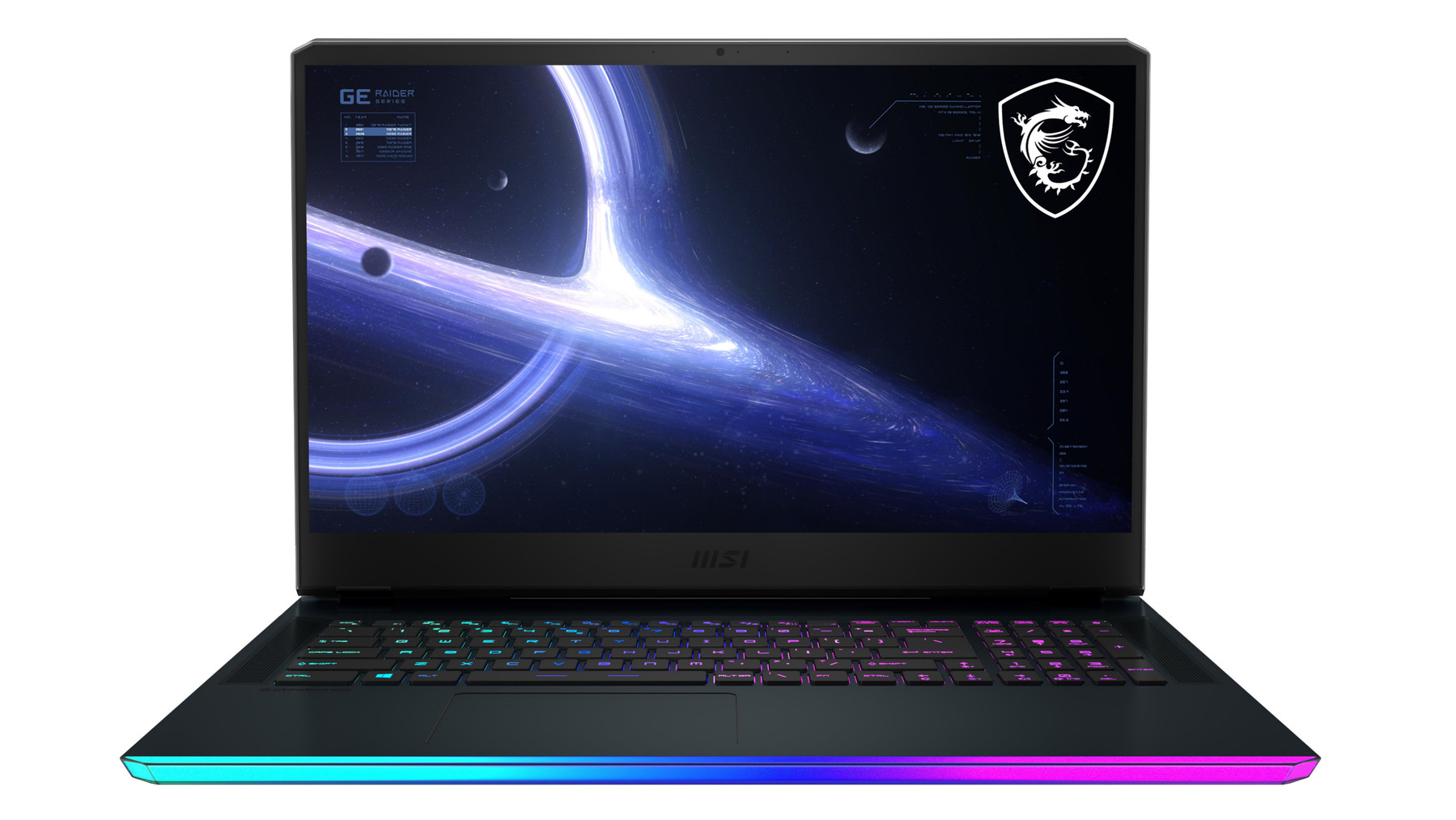

9. MSI GE 76 Raider (2021)
Our expert review:
Specifications
Reasons to buy
Reasons to avoid
If someone wrote you a blank check and said get whatever you want, then you’d probably go for something like MSI’s GE 76 Raider. Everything from the keypad to the GPU is top shelf and supercharged. And while you probably wouldn’t want to make it a regular thing to carry around this 2.9kg, 17.3-incher, it is at least possible to move it from place to place when the need arises.
There’s quite a range of units available locally spanning from devices with an 11th generation Intel Core i7 CPU, Nvidia RTX 3060 GPU and a QHD 165Hz screen for $3,299 to a device with a Core i9 CPU, Nvidia 3080 GPU and a 4K 120Hz display for $7,299.
Considering this oversized laptop is designed to be the pinnacle of performance, you’d be forgiven for wondering why it would bother including an option with an RTX 3060. MSI has seriously overclocked this GPU adding 15W and 102MHz to the maximum compatible power and Boost clock speeds of the stock Nvidia card. To put that in perspective, it’s drawing the same power as the RTX 3080 on the next most powerful system we’ve tested this year. So it’s not your average 3060 GPU.
We benchmarked a unit with an Intel Core i9-11980HK CPU, a Nvidia GeForce RTX 3080 GPU, 32GB of RAM and a 17.3-inch QHD screen with a 165Hz refresh rate that goes for $5,999. While it is running Intel’s top 11th generation laptop processor the i9-11980HK is a bit of a flop sadly, performing within a few percent of cheaper CPUs like AMD’s Ryzen 9 5900HX and is generally less than 10 percent faster than an i7-11800H, even with ideal cooling architecture.
While it’s not a standout performer in general processing power, the CPU is at least able to provide solid support for the GE76 Raider’s various overclocked GPUs. Generally the performance of the 155W RTX 3080 was between three and nine percent better than 3080’s maxing out at around 125W, but we did record fps bumps up to 17 percent in more demanding titles like Tom Clancy’s: The Division 2 using 1080p Ultra settings. There’s potential for even bigger performance bumps for high resolution 4K or Ray Tracing applications, so there’s definitely a valid argument for this device’s graphical capabilities.
If you need the best performing gaming laptop at any cost then the MSI GE76 Raider is the device for you, but there are some pretty apparent diminishing returns. Across our suite of gaming benchmarks this $5,999 device gets 52.8 percent better frame rates than a $2,899 Asus ROG Strix G15 with an AMD Radeon 6800M. Against the $3,499 Aorus 15P YD with a 130W 3080 you’ll see an average of 9.1 percent better framerates and there was only an average 0.2 percent difference between the performance of the GE76 Raider and Alienware’s $4,499 M15 R6.
A large 95Wh battery provides enough power to keep this unit running for over five hours in both work tasks and 1080p movie playback. The Steelseries per key RGB keyboard feels fine, but the keys have a lot of resistance and not much tactile response, so it’s a long way from the mechanical style you might expect on this unit.


All the perks of a gaming laptop in an Ultrabook form factor.
10. Razer Blade 14
Our expert review:
Specifications
Reasons to buy
Reasons to avoid
The Blade 14 from Razer is a sleek looking Ultrabook that weighs under 2kg and is less than 2cm thick, so it doesn’t look out of place up against today’s best professional laptops. This is why it’s perhaps a little surprising to see that you can get the Blade 14 with the biggest Nvidia GeForce RTX 3080 in it. It’s not a full-fat 3080 mind you – the maximum GPU power draw on the Blade 14 is capped at 100W, about two thirds of the maximum power allocation this GPU can be used with in a laptop according to Nvidia. This means that in addition to looking great, the most expensive Blade 14 is also an exceptionally good way to burn money, since you’re unlikely to see even 10 percent performance increases in graphics applications over the alternative RTX 3070 Blade 14.
Other than the $4,999 RTX 3080 model and the $3,999 RTX 3070 Razer Blade 14 devices, you can also get a unit with an RTX 3060 for $3,099. While all three of these units feature one of AMD’s latest Ryzen 9 5900HX CPUs, 16GB of RAM and 1TB hard drives, only the two more expensive configurations get a Quad HD 165Hz display, with the entry level model settling for a FullHD 144Hz display.
We really like the choice of a 1440p fast monitor on this device because it allows gamers to get competitive frame rates online, without sacrificing pixel density for working on.
Something like Asus’s TUF Gaming A15 offers comparable performance for $1,600 less than the 3070 model here, so you’re definitely paying a premium for the slim Blade 14 3070 form factor, but if that’s what you’re after, there’s only a handful of devices offering it.
You won’t have any issues running demanding work applications on the 8 core 16 thread Ryzen 9 CPU, which is up there with the best laptop processors available. High performance gaming is very much in this device’s wheelhouse too with demanding 1080p games pushing above 80 fps on ultra settings on the 3080 unit we tested. The 3070 Blade 14 won’t be far behind that, while the 3060 nets closer to the 60fps mark for modern 1080p titles on Ultra settings.
The 63Wh battery is a little disappointing, lasting only one hour and 40 minutes in PCMark’s Home office benchmark. It can stretch this to six hours and 15 minutes when under a lighter load like 1080p movie playback which isn’t bad for something with this size battery.
A decent amount of fast PCIe SSD storage, a nice membrane keyboard and a reasonable selection of interface options round out a nicely designed laptop that’s just rather expensive.
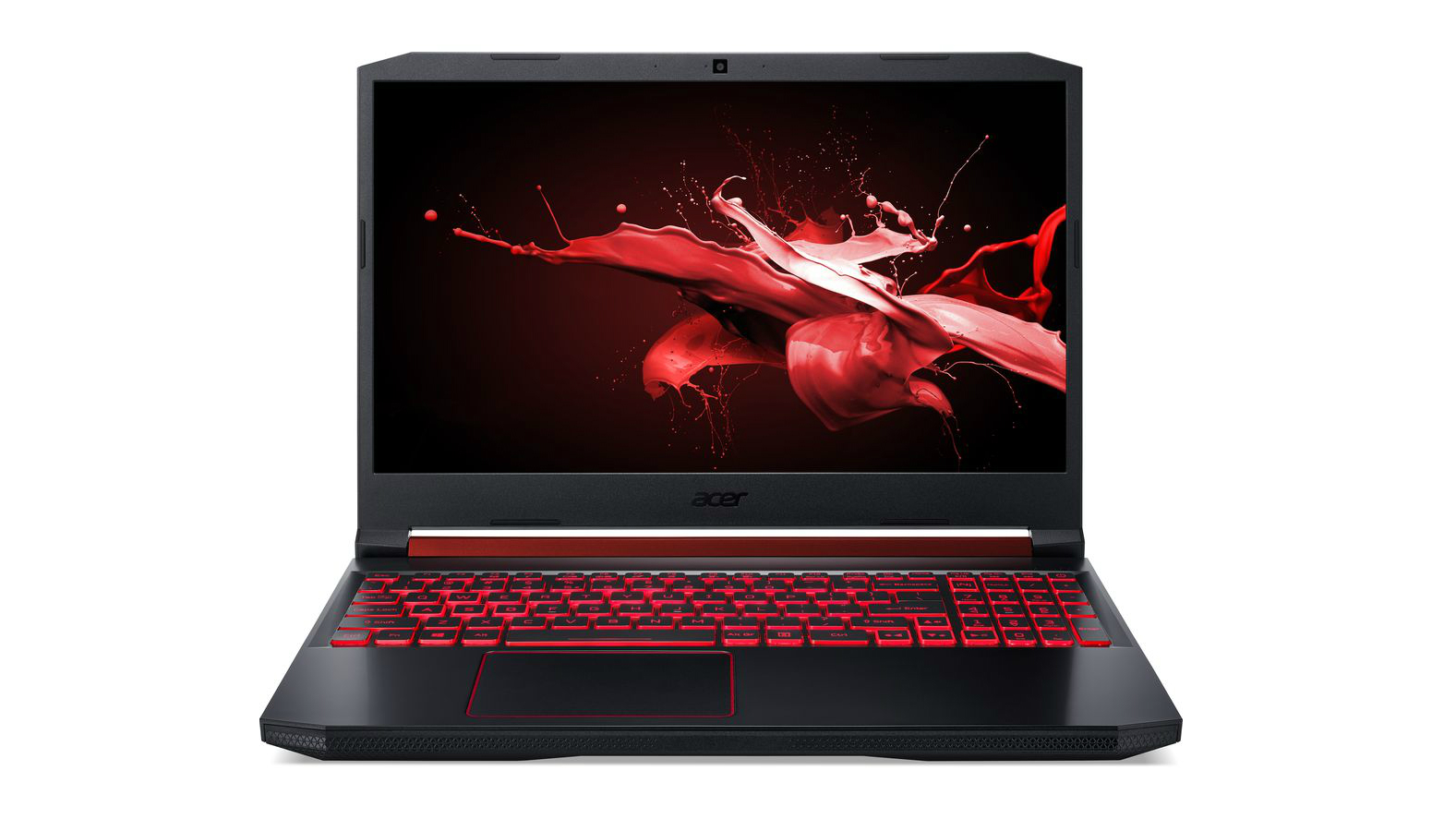

If you have a very tight budget, then the Acer Nitro 5 is definitely worth checking out.
Specifications
Reasons to buy
Reasons to avoid
We’ve loved the last couple of Nitro devices from Acer and it looks like the 2021 Nitro 5 is on track to deliver the same bang-for-buck value as its predecessors. Part of the reason these budget gaming rigs can afford to be such good value is that they harness the power of 10th generation Intel H processors, which were almost end-of-life when the first 2021 Nitro 5s hit shelves locally. Regardless of their age the i5-10300H or the i7-10750H are powerful mobile CPUs that’ll give you enough under the hood to push through demanding workloads, creative projects and gaming tasks.
In addition to the Intel arrangements, the Nitro 5 also has AMD models that range all the way up to a Ryzen 9 5900HX with an Nvidia RTX 3080 and 32GB of RAM for $3,999, which is pretty reasonable considering the power and the fact that it’s currently widely available. There were AMD Ryzen 7, 16GB, RTX 3070 models made too, but good luck finding one in stock anywhere.
We tested an i7, 16GB, RTX 3060 model that you can get for $2,199 form Harvey Norman, which definitely hits a sweet spot in terms of price and performance, but we’d opt for the similarly priced R7 AMD model from Wireless 1 if we had the choice. This rig sports a 15.6-inch 144Hz 1080p monitor for high paced online games and fast shooters, but it’s actually quite bright and vibrant for a matte display. You’ll get different screens for different models, so we can’t really speak for the whole range and Acer has opted to sell different devices through different vendors so keep an eye on the specs you’re after.
Main processing performance was where we’d expect from the 10th Gen i7 CPU which is fine for demanding work tasks, but is still between 20 and 35 percent behind the Ryzen 7 5800H. The Nvidia RTX 3060 performs nicely though, beating a 2060 (Max-Q) by about 25 per cent and trails behind the 3070 by about the same margin. You can expect to demolish most creative tasks and you’ll get 60fps on many modern shooters at Ultra 1080p and over 100fps on anything less demanding.
The Nitro 5 isn’t the slimmest gaming laptop you can get, but even budget devices like this are under 2.5cm thick and weigh just 2.3kg, which make them portable (unlike anything more than a few years old). The overall black aesthetic with hot red vents is a good balance of flashiness for most users, and while the chassis is a cheaper aluminium and plastic combo, it’s not flimsy. The keyboard is nice to type on and the trackpad is really usable. Someone definitely made an oversight with the rear powerport, which can be difficult to plug in (or know when it's plugged in), and the screen hinge doesn’t offer consistent resistance so it can slam shut, but on the whole it’s fine for a budget rig.
Battery life was pretty good for a gaming laptop lasting four hours and 26 minutes in PCMark 10 battery benchmarks and 6 hours and 22 minutes in 1080p movie playback. It’s still a long way off the lifespan you get on an Asus TUF Gaming, but it’s pretty good for a gaming laptop.
If you want to compare this system to our number one gaming laptop from the last generation, then be sure to check out T3's Asus ROG Zephyrus G14 vs Acer Nitro 5 comparison feature.
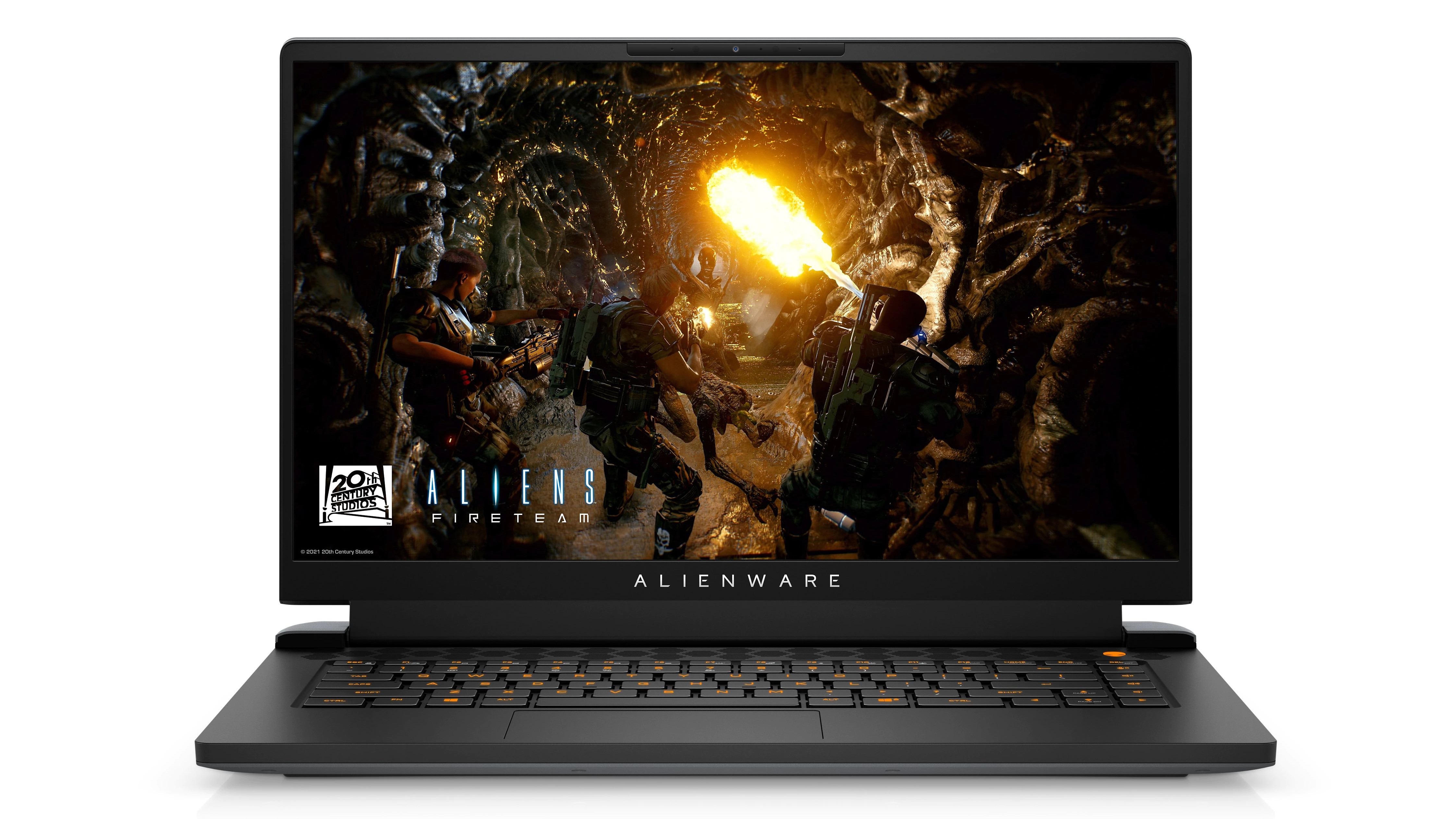

How does the latest ultra fast gaming laptop from Alienware stack up against its AMD sibling?
12. Alienware M15 R6
Our expert review:
Specifications
Reasons to buy
Reasons to avoid
Dell has decided to split the AMD and Intel variations of its powerhouse M15 Gaming laptop into two categories, labelling all the Ryzen based units R5 and anything with Intel CPUs: R6. The Ryzen 5000 series has been around since the start of the year and Intel’s 11th generation H series processors only just arrived on laptops in June, so the naming convention makes sense, but the race between the two is closer than the numerical labels let on.
The M15 R6 range starts with an Intel Core i5-11400H CPU, 16GB RAM and Nvidia RTX 3060 GPU configuration with a 15.6-inch 165Hz FullHD display. Dell is selling this entry level model for $2,799, which is about $800 more expensive than some of the better value comparable units around. At the other end of the range is the Alienware M15 R6 with an Intel Core i7-11800H, 16GB of RAM, and a Nvidia RTX 3080 (125W) on a 15.6-inch 360Hz display which has an RRP of $4,499. This model was on sale for $3,824 at the time of writing, which puts it into a reasonable price point considering it has the fastest screen currently available to gamers on laptops, but you can get similar specced units with 240Hz monitors for more than $500 less than this sale price, which makes sense for anyone who doesn’t have a gaming sponsor paying for their laptop.
As we said on the M15 R5, the R6 has a nice build quality with a great keyboard and a good looking gaming chassis. The 15.6-inch 360Hz screen is reported to have a 1ms response time, G-Sync and the new Advanced Optimus auto GPU switching technology from Nvidia, so there isn’t much in the way of advanced screen features that you’ll miss out on.
The i7-11800H on the M15 R6 was generally comparable to the AMD Ryzen 9 5900HX on an R5 across our suite of CPU benchmark tests, but it did land 14 percent behind it in some media encoding tasks. When it comes to gaming, everything we threw at it for Full HD ‘Ultra’ was above 92fps with less demanding titles getting over 200fps on Ultra settings. We did note particularly good performance on high framerate games, which is a good feature for a device with such a high refresh rate.
The Advanced Optimus GPU power mode switching software did a bit to help this unit last about 18 percent longer in general work tasks than the M15 R5. Despite this improvement however, the 84Wh battery wasn’t outside the realm of gaming laptops lasting three hours and 24 minutes in PCMark 10 and five hours in 1080p movie playback battery benchmarks.
While we wouldn’t recommend the entry models based on value, you always pay a premium to have the best equipment around and there just aren’t that many laptops with 360Hz monitors available. If you need this then the top spec M15 R6 is a great gaming laptop that is appropriately priced.
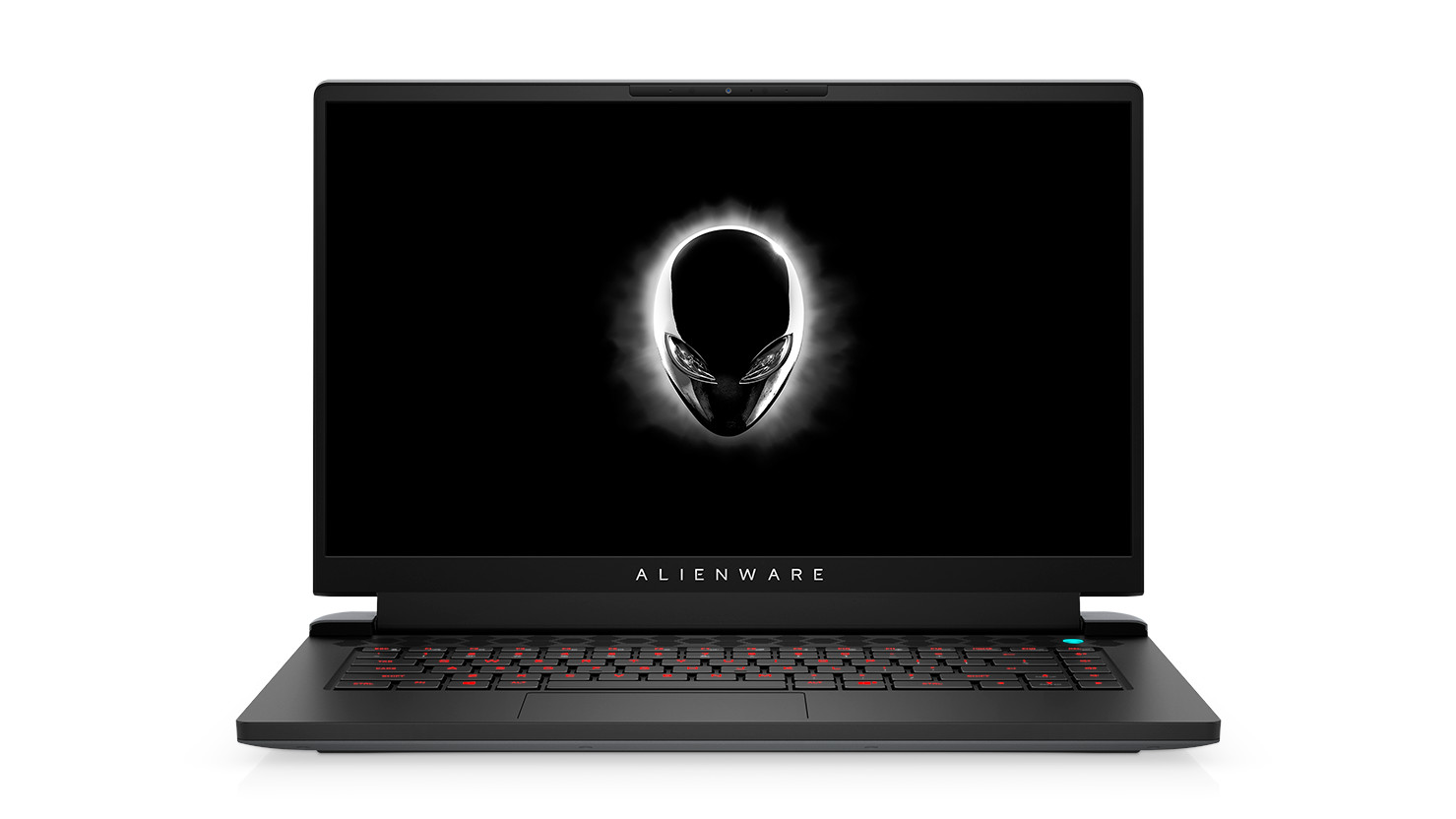

13. Alienware M15 R5
Our expert review:
Specifications
Reasons to buy
Reasons to avoid
The M15 R5 comes with either an AMD Ryzen R7 5800H and 512GB of storage or an R9 5900HX CPU with 1TB of space. The former you can pair up with a Nvidia GeForce RTX 3050 Ti GPU for an RRP of $2,499 or an RTX 3060 for $2,899, while the latter is only available with an RTX 3070 for $3,599. These rates aren’t particularly competitive, especially when they all get a pretty standard 16GB RAM allocation, but we have seen considerable discounts around. The 5900HX unit, for example, has been available for $2,799, which is pretty reasonable but, you can get the Asus TUF Gaming A15 with comparable specs for $2,399 if you are willing to sacrifice a little on chassis materials.
The Alienware M15 R5’s does have a particularly nice build quality. The soft finished metal chassis looks and feels elegant, there’s design references to Dell's longstanding gaming range in the vents and t-hinge screen, and the mSeries AlienFX keyboard is one of our favourites on a gaming laptop, feeling almost as good as a stand-alone mechanical keyboard. This strong body carries a 15.6-inch 165Hz FullHD gaming monitor with 3ms response time. While this screen is gonna’ be fine for enthusiast gamers, it’s not the best value we’ve seen. Comparable units throw in 240Hz and even 360Hz displays with this kind of setup for similar and even sometimes lower prices.
There isn’t a heap of difference in the general work performance of the Alienware M15 Ryzen 9 5900HX and the Ryzen 7 5800H processors. In fact, the Asus TUF Gaming A15’s Ryzen 7 outperformed Alienware M15 R5’s Ryzen 9 5900HX by up to 15 percent on some of our multi-threaded general work tasks. We suspect this was due to a less than optimal cooling architecture since it was pretty easy to get the Alienware to spike above 100 degrees (we hit 103 in testing), so having the top Ryzen processor here doesn’t make much difference. In media encoding the Ryzen 9 beat Intel’s Core i7-11800H on an Aorus 15P YD by up to 15 percent, but in general work benchmarks it was generally 10 to 25 percent behind, so performance will vary depending on the task.
Graphically the Alienware M15 R5 with an RTX 3070 hits the sweet spot in terms of performance offering 60+ frames per second on Ultra 1080p settings for all the titles we tested. F1 2020 and Sid Meier’s Civilization VI even managed 150 frames per second to max out its screen refresh rate.
The 83.4Wh battery was reasonable for a gaming laptop but a bit disappointing compared to other 5000 series Ryzen machines netting just two hours and 53 minutes in PCMark 10 and four hours 36 minutes in 1080p movie playback.
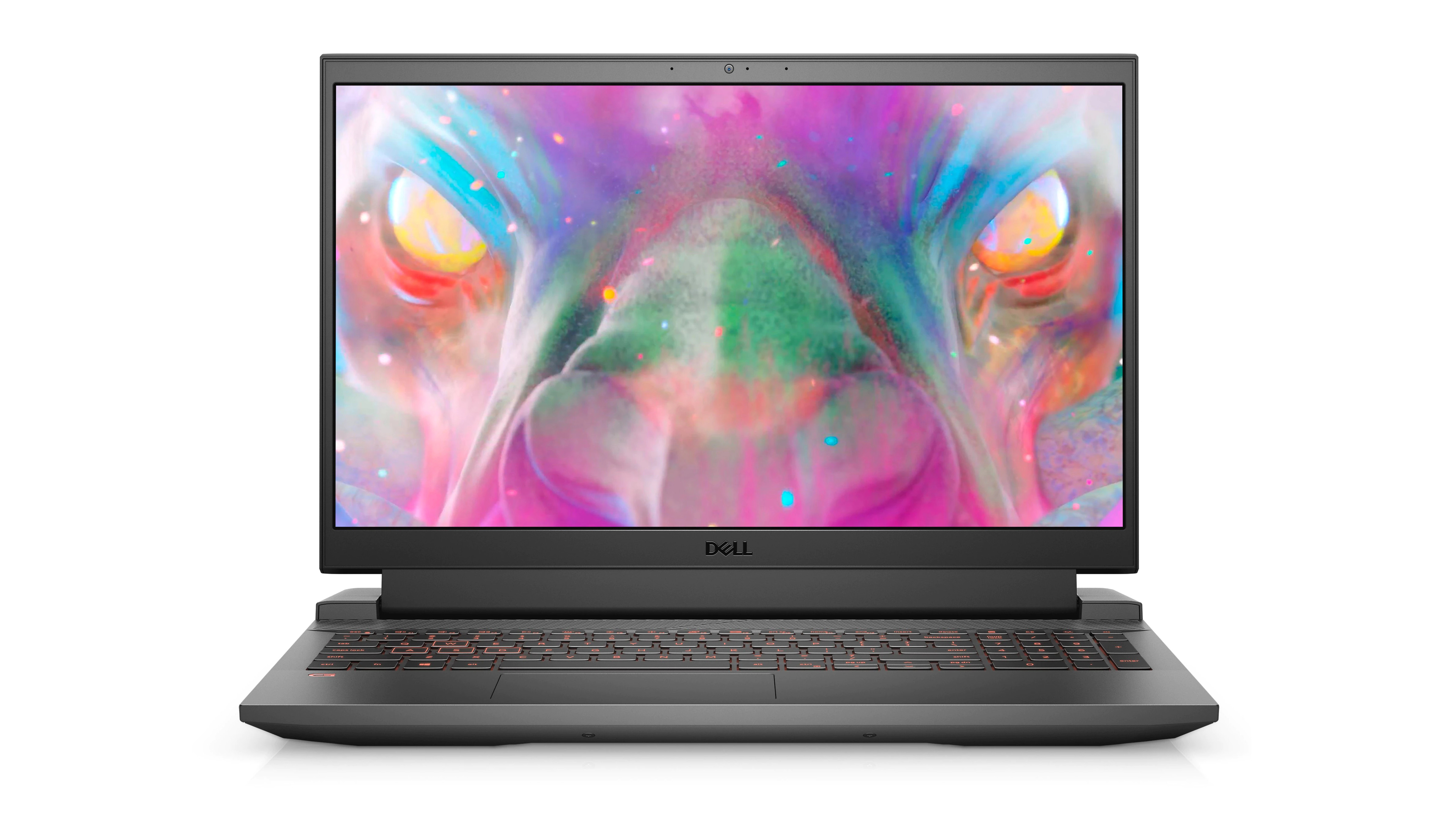

14. Dell G15
Our expert review:
Specifications
Reasons to buy
Reasons to avoid
If Dell’s long standing Alienware brand is a bit outside your budget then its home brand range of gaming laptops are an alternative that’ll give you more frames per dollar. We’ve seen a number of decent entry level gaming laptops emerge at just over the $1,000 mark over the past few years and you can still get the G15s with a 10th Gen Intel i5 and a GTX 1650 for around $1,100 for anyone on a particularly tight budget.
If you want the latest 11th Gen processors however, the new range of G15s start at the more mid-entry pricing of $1,699 ($1,444 on sale). For this you’ll get a 15.6-inch full HD display, a Core i5-11400H CPU, 8GB of RAM and a Nvidia GTX 3050 GPU system with 512GB of PCIe storage. It’s been many years since we tested a gaming laptop with only 8GB of RAM – it actually predates our testing database, so we can’t actually confirm if consumers are getting shafted here. It is possible that 8GB is enough, considering the level at which you’ll be gaming on a 3050, but it could also be a major bottleneck when playing something like Cyberpunk 2077 where 8GB memory is the minimum specification. Considering there’s a handful of comparable gaming rigs with 16GB of RAM, faster screens and even better GPUs available for the same price, you’ll probably want to go with something else here.
The next tier of G15 offers an i7-11800H CPU, 16GB of RAM and an RTX 3050 Ti for $2,199, and you can update this GPU to an RTX 3060 for an extra $400. There’s a lot of competition around this price point so it’s easy to find laptops with faster screens or more internal storage for a couple hundred dollars less.
While the Dell G15 deep grey colouring blurs the lines of work and play, the unique vent designs, RGB keyboard and thicker chassis do hint at this laptop’s gaming capabilities. Dell sent us the top end i7, 3060 model to test out and while this model is only a bit more expensive it will offer around 50 percent better graphical performance over the 3050 Ti unit. This is enough to push above 60fps on demanding titles at 1080p Ultra and will reach averages of about 100fps on less intensive titles like F1 2021 on the same settings.
This performance is well balanced against the 15-inch 120Hz display which has good colour and a reasonable 250nit peak brightness. Unfortunately there’s no G-Sync or FreeSync included so you’ll have to expect a bit of screen tearing or big frame rate jumps, which is a bit disappointing considering Nvidia is now compatible with the free adaptive sync technology.
When not gaming this CPU offers major generational bumps over the 10th generation i7 processors of between 19 to 66 percent. This is largely because the chips have gone from hexa-cores to octa-core processors, so while you might be able to get laptops with last year’s CPUs in them for a discount, the value isn’t there when you consider the performance drop. This processor will churn through demanding work tasks and should hold up to demanding photographic or modelling suites.
The 84Wh battery delivers a pretty standard four hours and 13 minutes under general working conditions and six hours and 13 minutes in 1080p movie playback.
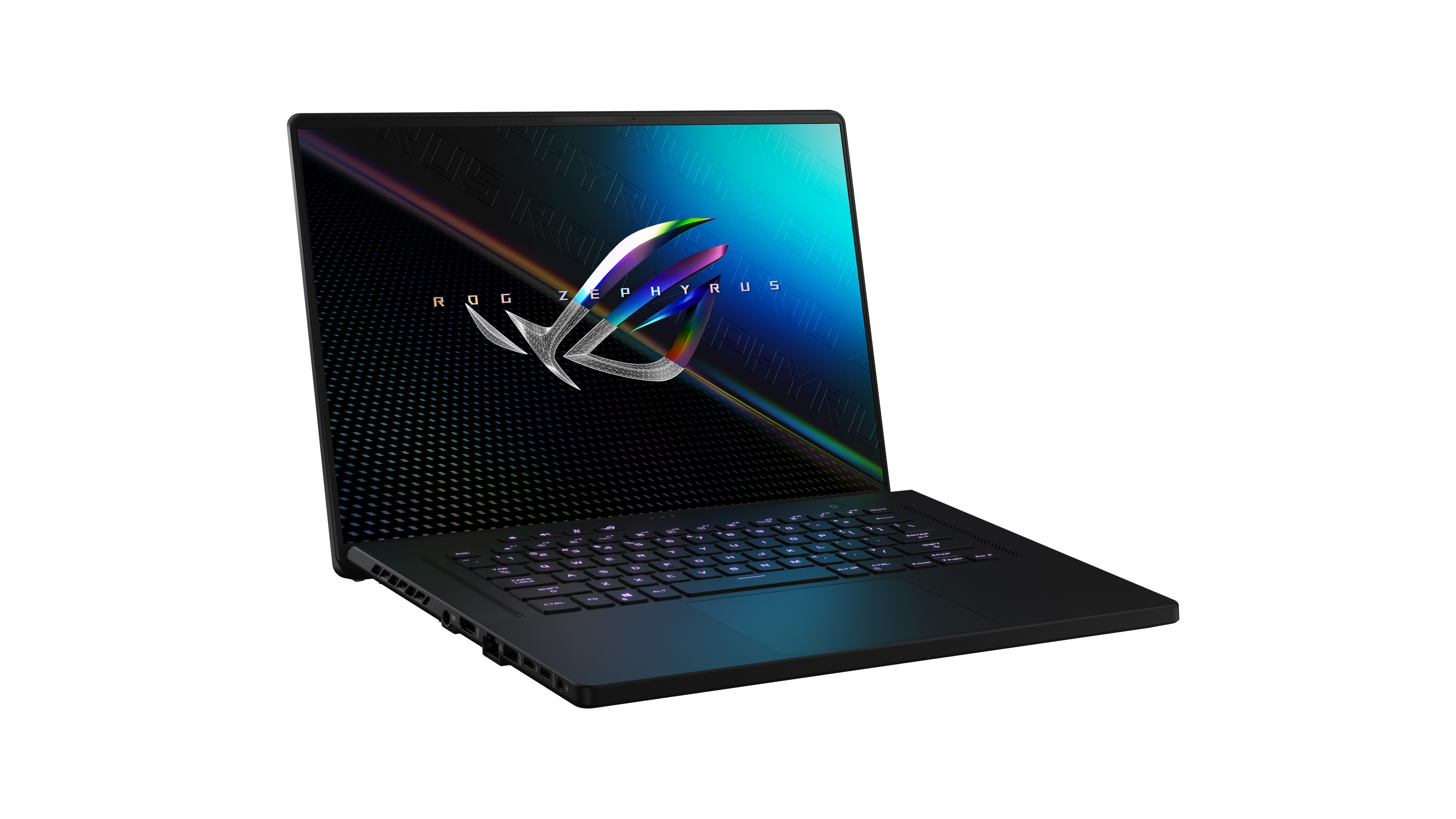

Specifications
Reasons to buy
Reasons to avoid
A premium gaming laptop in every sense, the Asus ROG Zephyrus M16 (GU603) packs in some serious specs, including the most powerful 11th Generation Intel Core processors and Nvidia’s RTX 30-series GPUs. Without a shadow of a doubt, you'll be impressed by its speedy performance and smooth graphics.
You get all of that in a laptop that weighs less than 2kg, so it’s actually a very portable PC unlike some of the others on this list. It doesn’t have over-the-top RGB lighting features either, instead opting for a classy, smart matte black design which alongside the screen's 16:10 aspect ratio makes it well suited to professionals and creatives who want to switch between work and play.
The only major downside is that the battery doesn't last the entire day, but that is kind of expected given the amount of power you get. That means you will need to carry the chunky charger with you most of the time, although I’m sure most gamers can look past that.
When it comes down to it, this portable gaming laptop feels premium to use and has a large ultra-sharp display. Anyone who is power-hungry and willing to splash the cash on it won’t have any regrets about doing so.
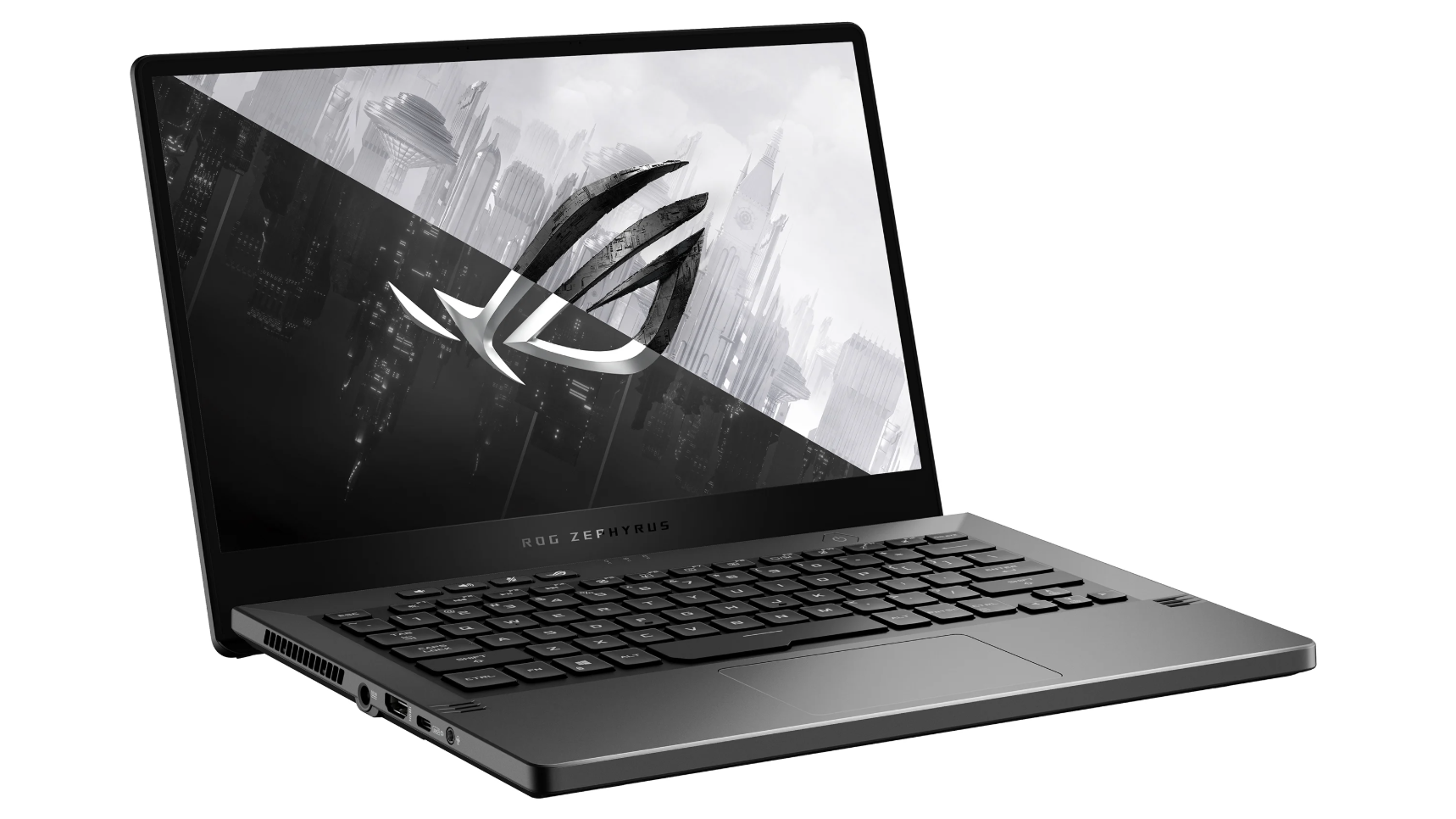

The Asus ROG Zephyrus G14 is still one of the best gaming laptops on the market today, based on price.
Specifications
Reasons to buy
Reasons to avoid
The Asus ROG Zephyrus 14 is a game-changing gaming laptop that delivers buckets of performance despite being compact and light. It does this thanks to its use of AMD's hot new Ryzen 4000 processors and Nvidia's RTX 2060 GPU, which when partnered with plenty of RAM and a quality 120Hz 14-inch display, makes for superb, highly portable gaming results.
The design is also really smart, with a dropped hinge screen and AniME Matrix LED display on the CNC milled, dot matrix lid radiating a futuristic aesthetic. A quad-speaker system that is Dolby Atmos enabled also means that, for a laptop, the levels of audio it is capable of are remarkable and the battery life on the system, too, just runs and runs (10.7 hours of video playback). A copy of Windows 10 Pro completes the package.
It's the fact that the Asus Zephyrus 14 delivers such a quality all-round gaming package in such a compact and portable form factor that really sells it, though, making it a system that can be easily used for both work and play. It's only 1.60kg (3.53 pounds), so sliding it in a backpack is no problem at all.
The price, too, while not cheap is nowhere near the levels of what you can spend on a gaming laptop, which all in explains why consider the Asus ROG Zephyrus G14 the best gaming laptop on the market today for most people. It simply does it all, and does it all for a great price point.
Oh, and the Asus ROG Zephyrus 14 has impressed so many people that it has just bagged the much-wanted Best Gaming Laptop award at the T3 Awards 2020.
Want to see how this system stacks up to our top premium choice? Then scope out T3's Asus ROG Zephyrus G14 vs Asus Zephyrus S GX701 comparison guide.
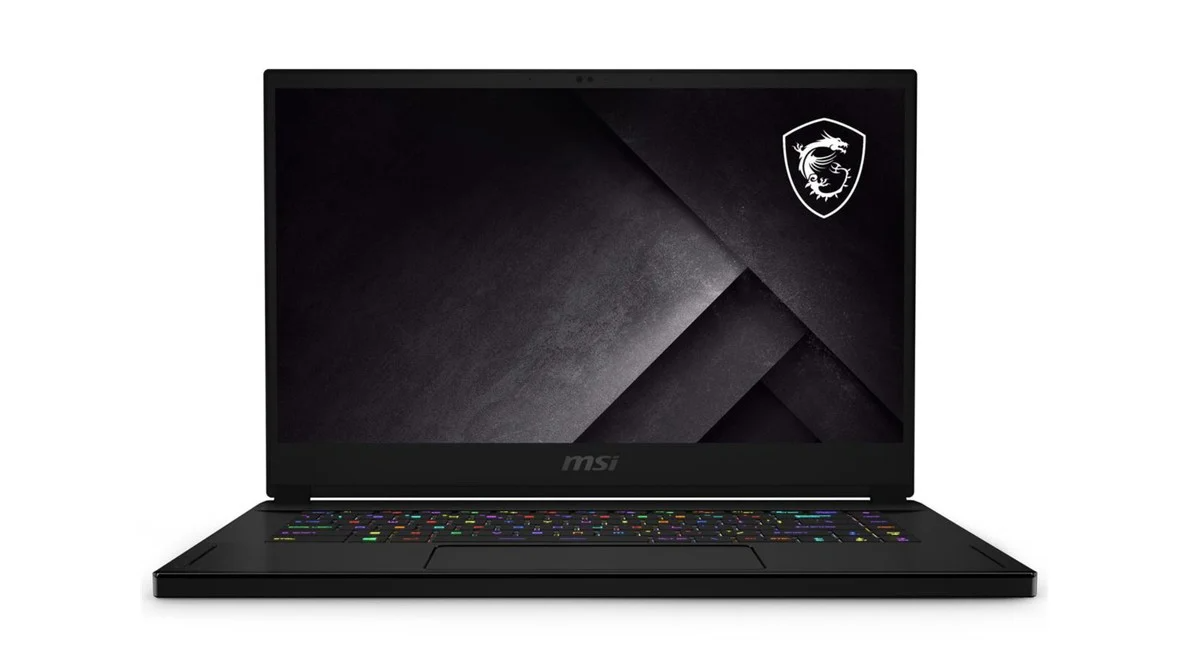

The MSI G66 Stealth looks like a stealth bomber. It's a flying machine (metaphorically, not literally).
17. MSI GS66 Stealth
Our expert review:
Specifications
Reasons to buy
Reasons to avoid
The GS66 Stealth doesn’t like to shout, but you may well shout excitedly when you use it: this is an astonishingly powerful gaming laptop with up to a 10th-generation Intel Core i9 and Nvidia GeForce RTX 3080 graphics. The i9 is capable of up to 5.3GHz in single-core Turbo mode. There’s a new cooling system and a massive 99.9Whr battery, and the display options include a silky-smooth 300Hz refresh rate. All models have Wi-Fi 6E for fast and stable network performance.
The GS66 has plenty of Nvidia gaming laptop features which all work towards making it powerful, thin, quiet and light. One of those features is Nvidia’s Resizable Bar, an advanced PCI Express feature that enables the CPU to access the entire GPU frame buffer at once instead of performing multiple small CPU to GPU transfers. According to Nvidia, that means a 9.5 percent performance increase in Assassin’s Creed Valhalla, 5.9 percent in Cyberpunk and a whopping 11.9 percent in F1 2020, taking the Stealth’s already impressive performance up an extra level.
This is not a cheap laptop by any means, but it’s an astonishing one delivering truly incredible performance.
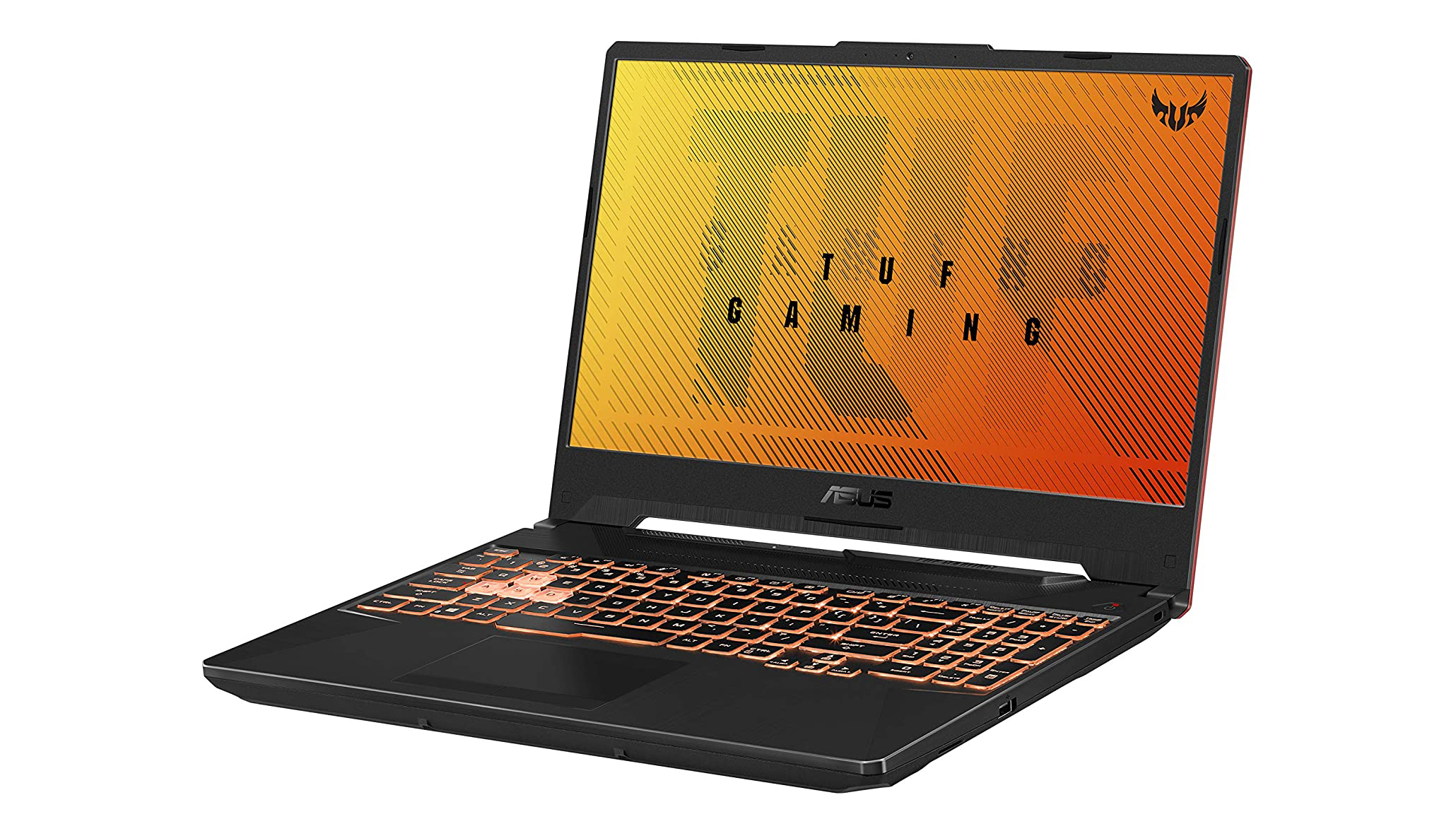

18. Asus TUF Gaming A15
Specifications
Reasons to buy
Reasons to avoid
The Asus TUF Gaming A15 is a great mid-range gaming laptop, but it comes with an important caveat: Asus announced a refresh at this year’s CES, so there's a bunch of great deals available on this older model.
The incoming model will have a slightly faster Ryzen 7 and a slightly more powerful GeForce GPU, but the existing A15 is no slouch: it has a 2.9GHz, octa-core AMD Ryzen 7 4700H processor, Nvidia RTX 2060 graphics with 6GB of VRAM, 16GB of DDR4-2666 RAM and a 15.6-inch Full HD display with 144Hz refresh rate.
There’s no doubt that this is a gaming laptop: the industrial design and the orange keyboard backlighting with highlighted WASD keys mean this Asus isn’t going to be mistaken for a MacBook Air. Asus makes a great deal of its testing to MIL-STD-810G standards, and while we wouldn’t fancy the A15’s chances against a tank it’s a tough laptop that’s more than a match for everyday knocks and scrapes.
It uses Asus’s own HyperCool technology to deliver effective cooling even during the most intense firefights, although the trade-off is that fan noise can become quite intrusive when you’re really pushing the Asus to its limits.
Nevertheless this is an excellent RTX-powered laptop and deals should make it even more attractive in early 2021.
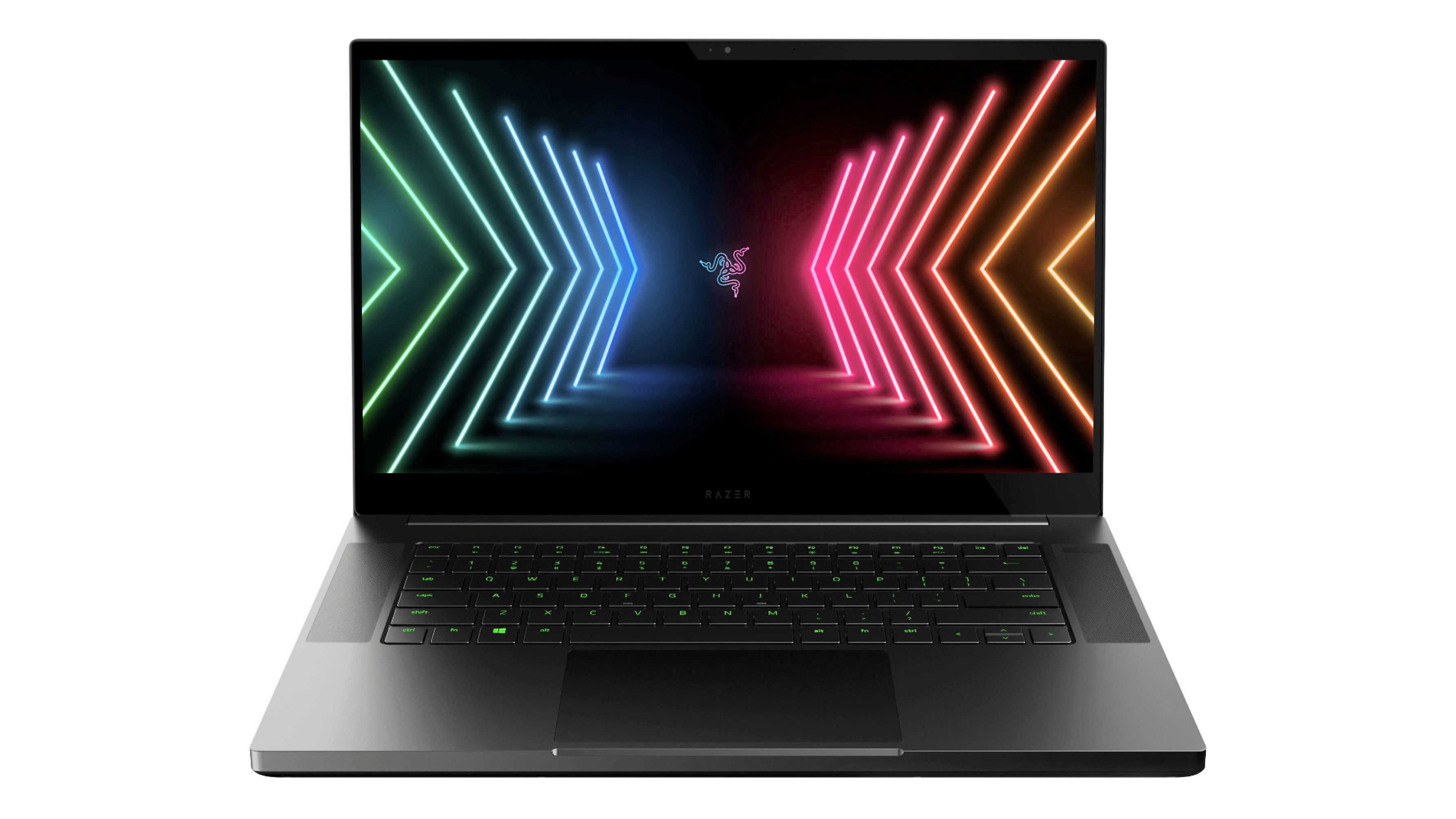

The power and style on show with the Razer Blade 15 is hard to fault.
19. Razer Blade 15
Specifications
Reasons to buy
Reasons to avoid
From every angle, the Razer Blade 15 is a fantastic gaming laptop and one of the best in the business, as you would expect from industry veterans Razer – the performance, the build quality, the lighting, the display... it's all here.
You can pick up the Razer Blade 15 in a variety of configurations, including one with a 4K screen rather than the standard Full HD one. With the latest Intel chips inside and up to 16GB of RAM, performance shouldn't be a problem, and you can add to that some of the best Nvidia GPUs in the business.
Any game should soon smoothly on this setup, and Razer has managed to pack everything into a chassis that wouldn't look out of place at a boardroom meeting. Be sure to check out all the available configurations before buying.
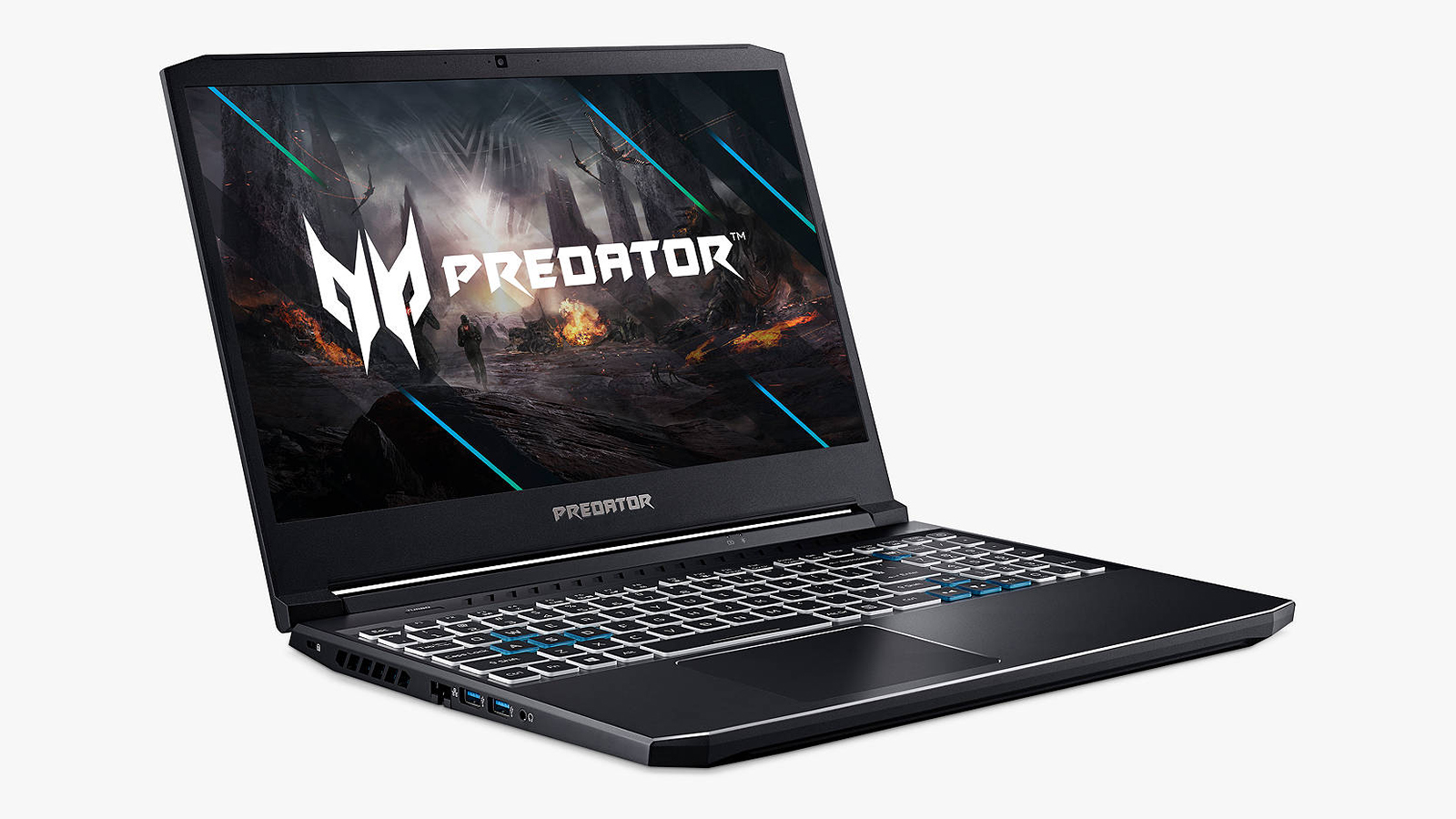

20. Acer Predator Helios 300
Specifications
Reasons to buy
Reasons to avoid
One of the benefits of gaming on the go in the modern era is that powerful components are now far more affordable – and that means new models with affordable price tags that are still able to run almost any game from your Steam library (and beyond).
With the latest version of the Acer Predator Helios 300, you're getting a beefy Nvidia GeForce RTX 2060 GPU and a lovely 15.6-inch FHD display to keep your PC gaming hunger sated, and yet it won't burn a massive hole in your savings. It's not at the very top end in terms of specs, but it'll have enough oomph for a lot of people.
We particularly like the 144Hz refresh rate panel, the one-button overclocking mode for the most casual of overclockers (it gives you more power in return for extra fan noise), and the extensive set of customisation options when it comes to the RGB lighting. Definitely worth considering.
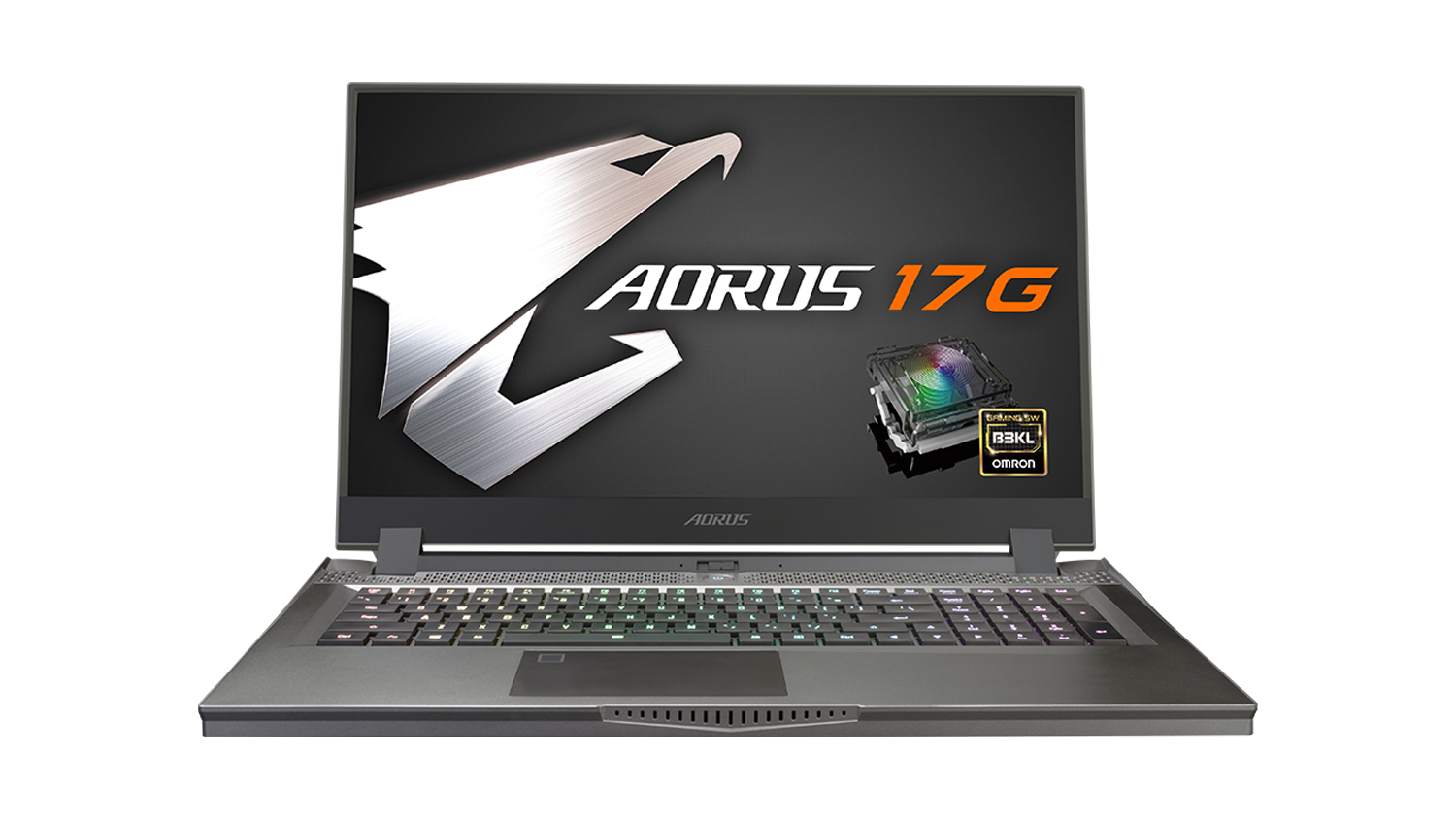

21. Gigabyte Aorus 17G (2021)
Specifications
Reasons to buy
Reasons to avoid
If money is no object to you on your quest for the best gaming laptop then your search should almost certainly stop right here. That's because the Gigabyte Aorus 17G is an absolute beast of a gaming laptop. But, what's interesting, is that despite it's god-tier gaming power, it actually looks rather underwhelming and, dare we say it, office ready.
For well-heeled professionals, though, who need a genuine home office replacement as well as portable gaming rig that can crush any game you throw at it, the Gigabyte Aorus 17G is a great fit as it simply doesn't do the word compromise.
RTX 3000 series graphics cards are just the beginning with this system, which also includes 64GB of RAM and supremely immersive 17.3-inch FHD 300Hz IPS panel. Yes, we're not talking 144Hz, or even 165Hz or 240Hz, we're talking 300Hz! For gamers who like playing fast, online shooters this system literally gives you not just a little edge, but a gigantic one.
And, talking of edge, you also get one with this system in terms of keyboard, with the Aorus coming with a fully integrated mechanical gaming keyboard. Accurate, precise, clicky-sound key presses from OMRON mechanical switches are yours if you can drop the cash.
Of course, all this silicon weighs a fair bit, meaning the Aorus 17G isn't the most portable of gaming laptops, and it is let down a bit by things like its webcam, too, but with decent battery life when unplugged (but not gaming, unfortunately), it's not the most normal computing averse gaming laptop we've ever seen.
The biggest barrier of course for most gamers will be the price, but with RTX 30 series graphics on offer, and a system that really does how the stones to replace your gaming desktop as well, it could be an investment that is worth it.
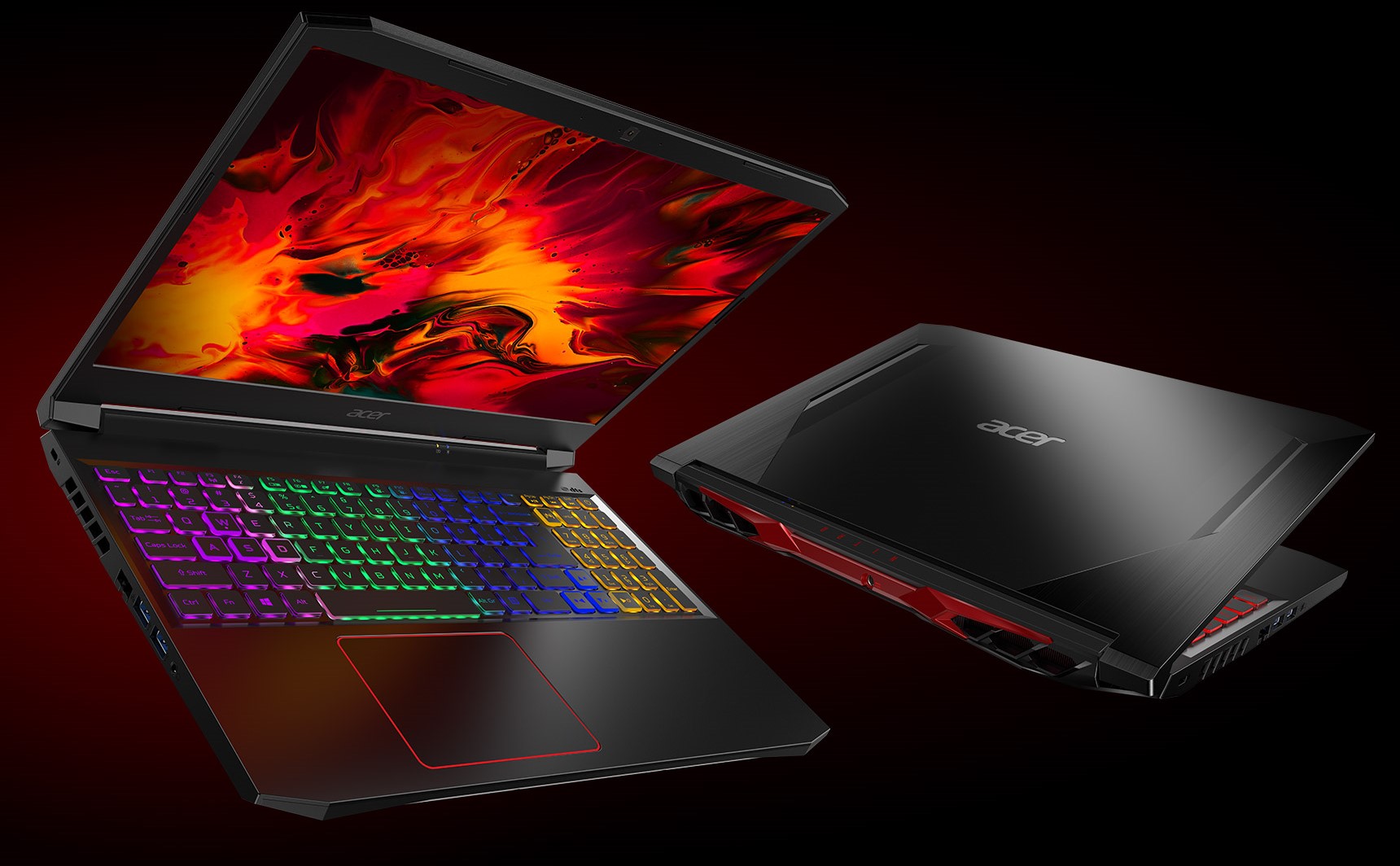
Internal components to screen resolution balance is crucial when choosing a gaming laptop.
How to choose the best gaming laptop for you
What you're looking for in the best gaming laptop of 2021 is the capability to run the most demanding games of the day – graphically intensive games, throwing up all sorts of shading and effects on screen – without having to make a ton of settings compromises along the way.
Bad gaming laptops advertise themselves on their gaming credentials, but then deliver vastly inferior performance to their desktop counterparts, so it's absolutely crucial that you avoid these clunkers.
High-resolution screens are a nice added bonus on a gaming laptop as well, but it's important to keep in mind that high frame rates are far more important when gaming on the go – so it's pretty pointless plumping for a laptop with a 4K screen if it doesn't have the interior hardware to power games on it.
In other words, a very high quality, Full HD screen can beat a 4K display in some situations, especially when it's partnered with stonkingly fast internals for a superb portable gaming experience.
Other things to look out for when buying a gaming laptop include weight and portability (after all you are buying this to carry around), battery life (a perennial problem with gaming laptops), and price.
Here at T3 we think you should be spending a minimum of £800 (about $1,000, AU$1,560) on a gaming laptop to ensure a good level of performance. If you can stretch to £2,000 / $2,000 / AU$3,500 or more, that will net you something from the premium end of the scale. There are some hyper-premium systems that retail for over £3,000 / $3000 / AU$4,5000 and, well, if you can spend that money then that is the price tier where you will get the absolute best tech and future proofing.
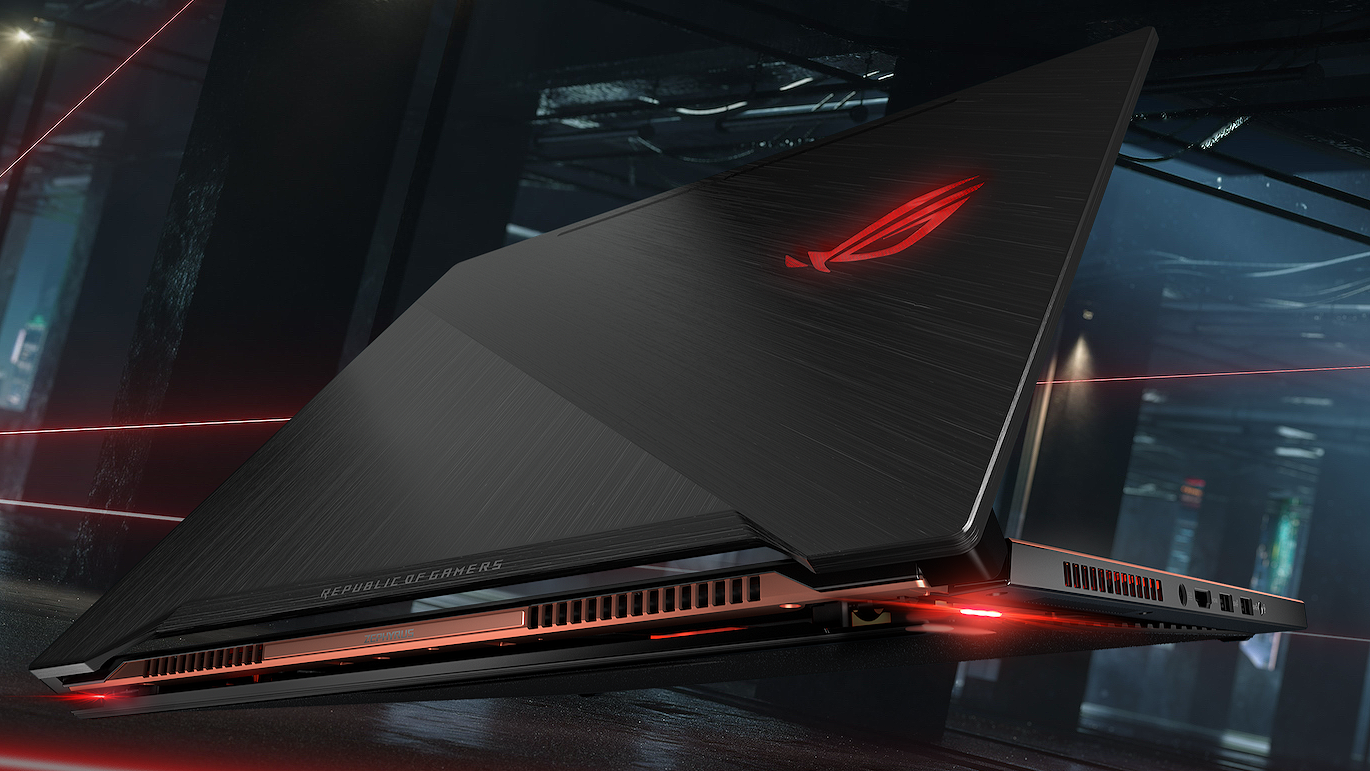
These are the top gaming laptop makers in business today.
Who are the best gaming laptop manufacturers?
In the gaming laptop field there are, as you might expect, a lot of makers. Some of these have been producing laptops for gaming for decades, and have serious pedigree, while others are newer to the game and are producing exciting and innovative new models.
Here at T3 we rate and review the finest offerings from these makers and, as such, have created our own list of what we consider the best gaming laptop makers in the world. We think it is pretty much impossible to objectively rank these makers, as each keeps outdoing the other with new systems, but we think if you buy a system from one of these firms then chances are you're going to be very, very happy.
Alienware – Dell's elite gaming-focussed arm has been turning out luxe, drool-tastic gaming laptops for 25 years now (founded in 1996). As you would expect from that legacy, that means that basically every system it makes is top-tier. There's a great attention to detail on each system's build quality, and thanks to its backing from Dell, each is often very customisable, too.
Razer – Razer's systems don't come cheap, at all, and they aren't very configurable either, but they are truly elite-tier in terms of fit, finish and style. If your pockets are deep enough you can get a system with loads of gaming power, too, and thanks to Razer's professional aesthetic, these systems can also be used in an office setting. Many models are also light and very portable.
Dell – Despite Dell having Alienware in its fold it also turns out some slightly less premium but still very capable and powerful gaming laptops under its G-range. The Dell G5 and G7 especially offer plenty of gaming performance, including ray tracing-capable GPUs, and also ring in less than Alienware, too. You also get the same levels of excellent customisation as well.
Asus – Asus, in T3's opinion, is currently killing it in the gaming laptop market, with a series of ranges covering all bases. The Asus ROG Zephyrus and Strix ranges especially have been frequent members of T3's best gaming laptop guide over the past few years, with tis systems delivering great build quality and style with raw pixel-pushing power. It's new Zephyrus G14 is highly portable, too.
Acer – Acer is an unsung hero of the gaming laptop market in T3's eyes, consistently producing very good gaming laptops that offer large doses of bling and gaming power. The Predator Triton and Helios are the two lines of note, which offer systems with different sized screens and specs, as well as cutting edge features and novel designs.
MSI – Symbolised by a dragon, MSI is probably the most exotic gaming laptop maker on the planet right now. It has a crazy amount of gaming laptop series, too, but if you shop for anything in the GT, GS or TE ranges then you're going to be very happy with your purchase. The GS Stealth laptops are especially liked by T3's staff members due to their portability as well as power.
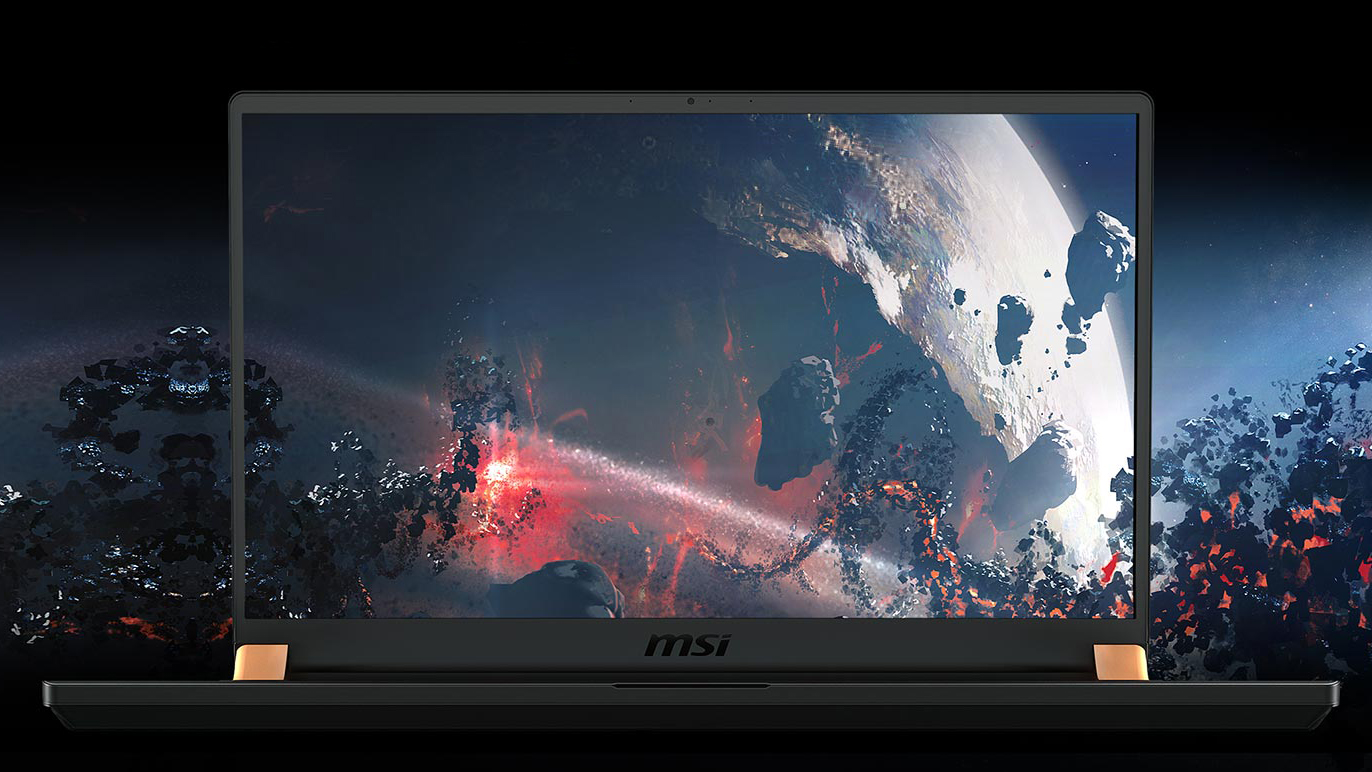
There's much to consider when testing out a new gaming laptop.
How we test gaming laptops
Reviewing laptops is a serious undertaking as, unlike many products, they are masters at many different things and feature a myriad of components. They also cost hundreds if not thousands to buy, so making sure a system is covered comprehensively is critical to our testing process.
With gaming laptops, though, the system's actual graphics performance in modern AAA games is the foremost consideration, and that's why we always put a gaming laptop through the best PC graphics benchmarking tool in existence, 3DMark. 3DMark not only has serious heritage as a benchmark tool, being trusted by gamers and companies alike, but also has a suite of tests to run.
We run as many of these graphics benchmarks as possible, and then also look to benchmark a game with its own built-in benchmarking tool if available. We also then experientially report back our findings of actually playing games on the gaming laptop, noting how smooth the framerates were and how high the resolution and in-game graphics settings could be pushed.
Away from game-playing performance, we also test out a gaming laptop's battery life and see just what its screen is like to use in normal, non-gaming tasks. This includes watching videos, editing images in PhotoShop and browsing the internet.
Of course, we also look to ascertain the gaming laptop's build quality. Many other things like fan noise, keyboard type and RGB lighting system are also evaluated, too.
Finally, we consider the system against its peers and in terms of value for money. It is then given a star score, with five stars been the top score any system can receive, and it is considered for entry into our best gaming laptops buying guide.
- Razer Blade vs Asus ROG Zephyrus M: which is the ultimate gaming laptop?
- These are the best NAS drives
Get all the latest news, reviews, deals and buying guides on gorgeous tech, home and active products from the T3 experts